Minimalist bathroom design continues to dominate interior trends, offering serene spaces that prioritize functionality while maintaining aesthetic appeal. The movement toward simplified living has transformed bathrooms from purely functional spaces into tranquil sanctuaries that embrace clean lines, neutral palettes, and thoughtful material choices. Modern minimalist bathrooms blend practicality with sophisticated design elements, creating environments that feel both spacious and purposeful. These spaces emphasize quality over quantity, featuring carefully curated fixtures, natural materials, and uncluttered layouts that promote relaxation and mindfulness in daily routines.
1. Floating Minimalist Bathroom Vanity Design
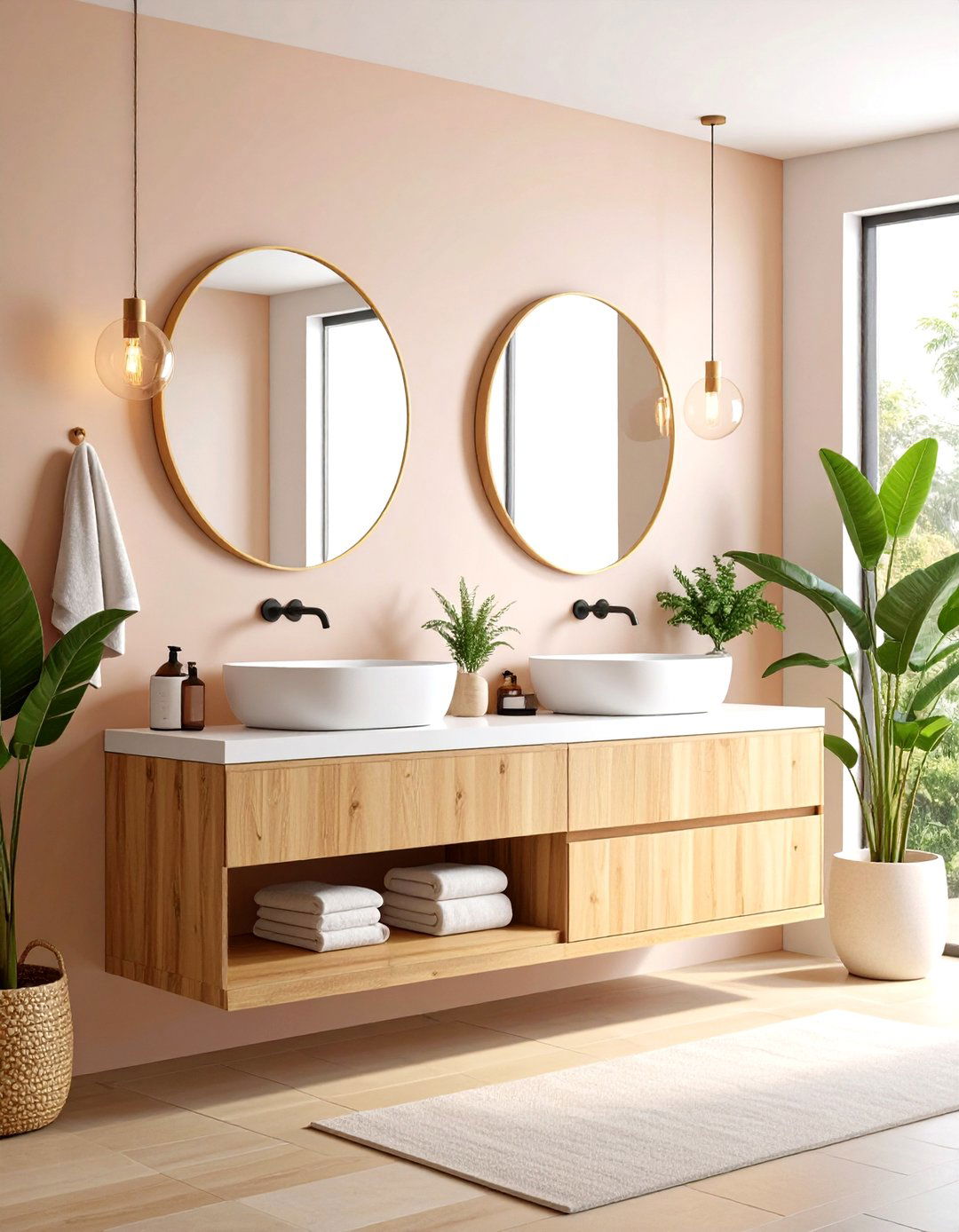
Creating visual lightness through suspended elements defines this contemporary approach to minimalist bathroom design. The floating vanity concept eliminates floor contact, instantly making spaces appear larger while maintaining sleek storage solutions. Wall-mounted vanities in neutral tones like white, gray, or natural wood create seamless integration with surrounding elements. The exposed floor area beneath becomes easier to clean while contributing to the overall sense of openness. Pair floating vanities with undermount sinks, hidden storage compartments, and minimalist hardware to achieve the perfect balance of form and function. This design particularly excels in smaller bathrooms where every square inch matters.
2. Japandi Minimalist Bathroom Fusion
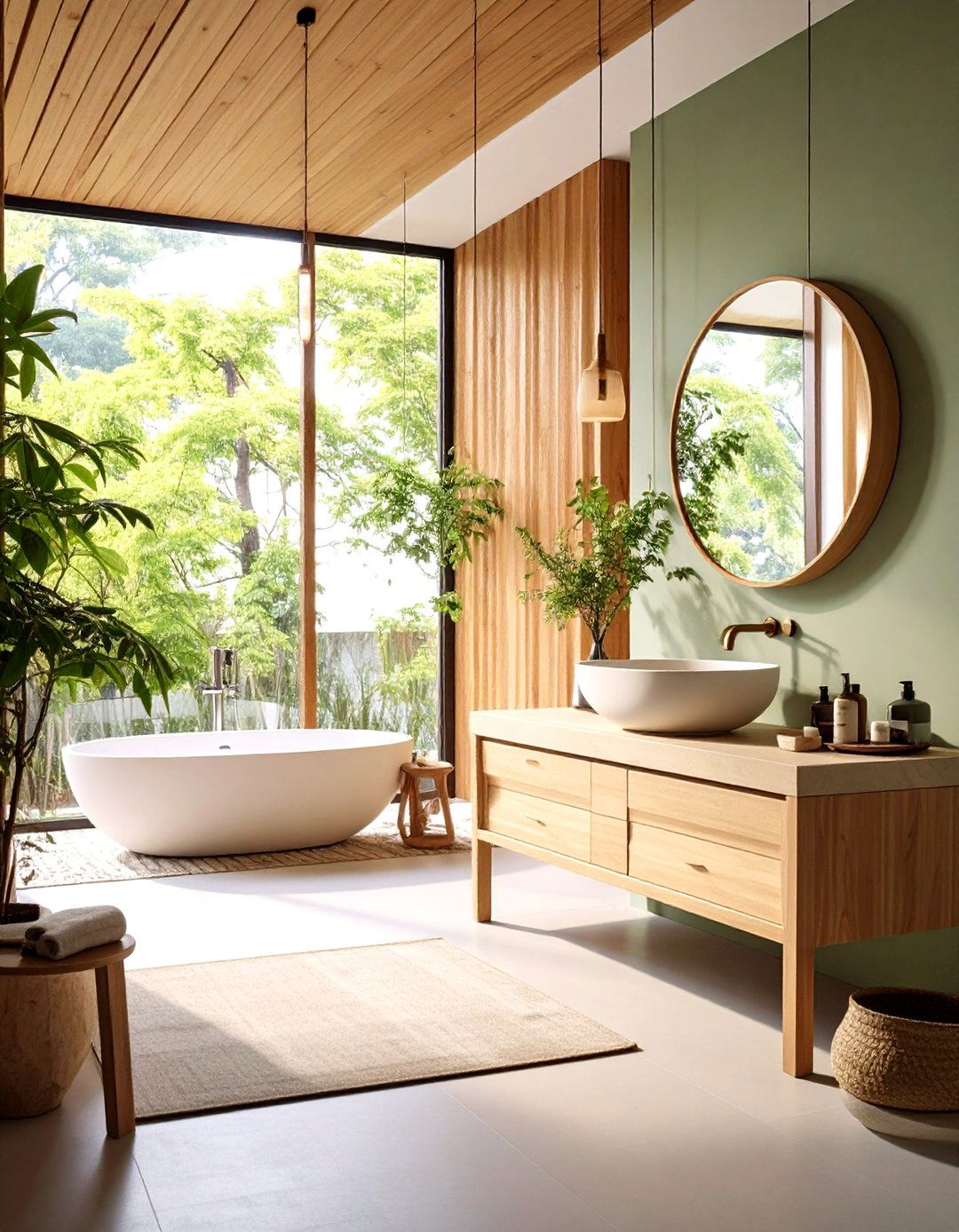
The harmonious blend of Japanese minimalism and Scandinavian functionality creates deeply calming bathroom environments. This design philosophy emphasizes natural materials like light woods, stone, and bamboo while maintaining clean lines and neutral color palettes. Incorporate elements such as wooden soak tubs, stone vessel sinks, and natural fiber textiles to achieve authentic Japandi aesthetics. The color scheme typically features soft whites, warm grays, and natural wood tones that promote tranquility. Low-profile fixtures, minimalist lighting, and carefully placed plants complete this serene design approach that transforms daily routines into meditative experiences.
3. Natural Stone Minimalist Bathroom Sanctuary
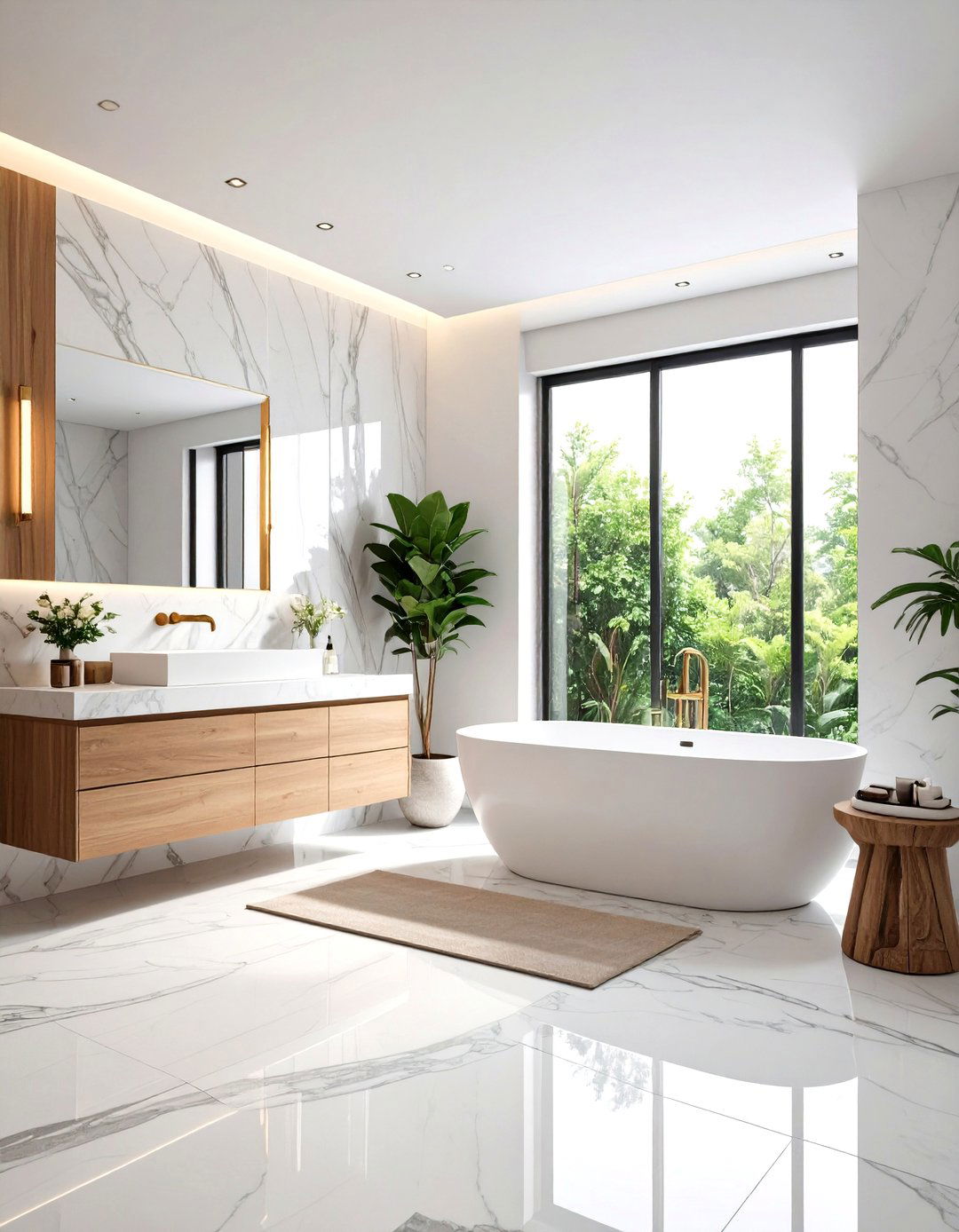
Raw natural stone creates sophisticated minimalist bathrooms that connect occupants with organic textures and earthy tones. Large stone slabs used for walls, floors, and countertops provide seamless surfaces with minimal grout lines, maintaining the clean aesthetic essential to minimalist design. Materials like marble, travertine, and limestone offer various textures from polished smooth to naturally rough finishes. The monochromatic stone palette creates visual continuity while subtle veining and natural variations add character without overwhelming the space. Complement stone installations with simple fixtures in brushed metals and minimal lighting to highlight the material's inherent beauty.
4. Concrete Industrial Minimalist Bathroom
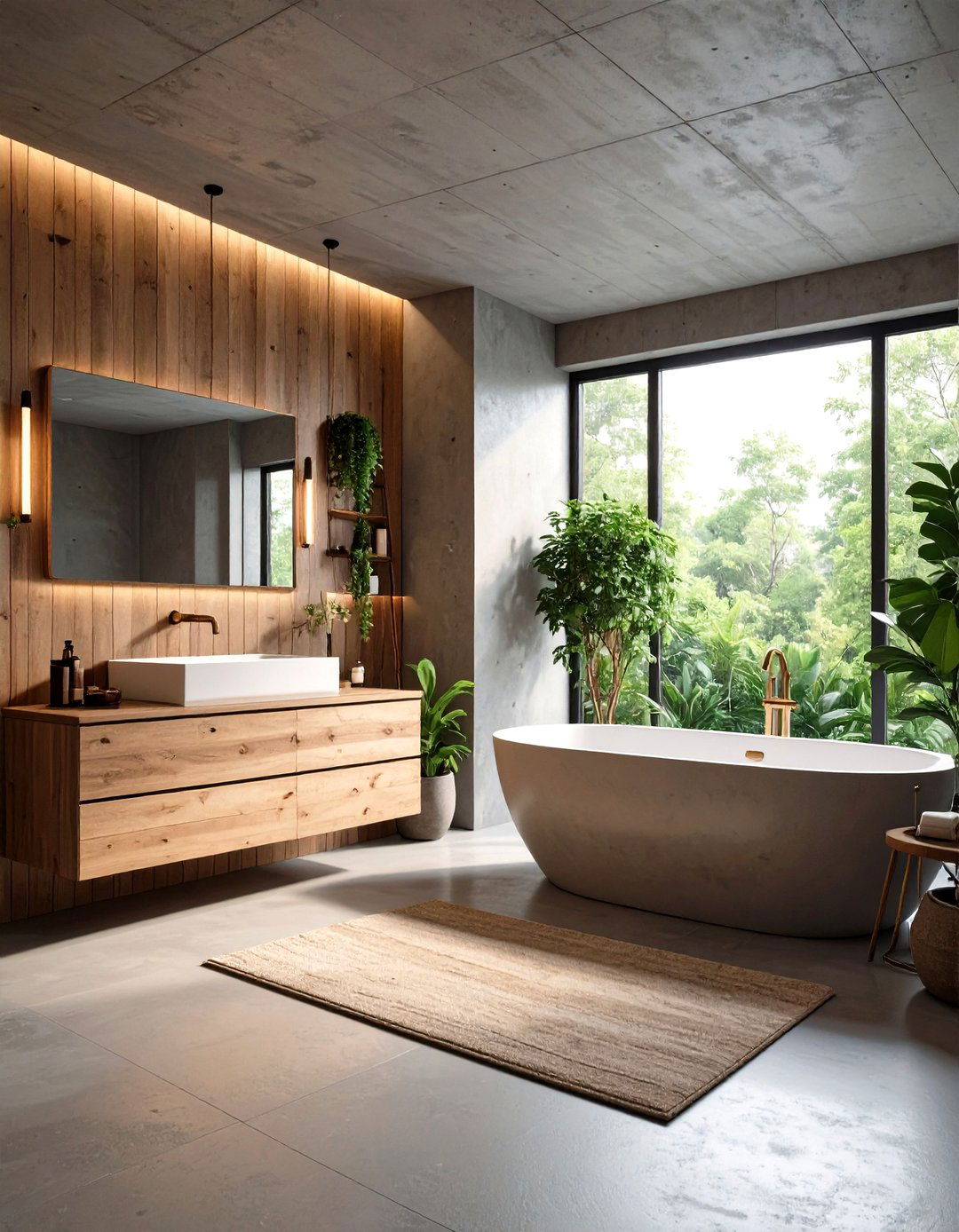
Polished concrete surfaces deliver modern minimalist bathrooms with subtle industrial character and exceptional durability. The seamless nature of concrete eliminates typical grout lines found in tiled surfaces, creating smooth, uninterrupted planes that exemplify minimalist principles. Concrete can be tinted in various gray tones or left in its natural state for authentic industrial appeal. Pair concrete walls and floors with warm wood accents, brass fixtures, and strategic lighting to soften the material's cooler tones. This approach works particularly well in loft spaces and modern homes where the architectural integrity embraces raw materials.
5. Scandinavian Light Minimalist Bathroom
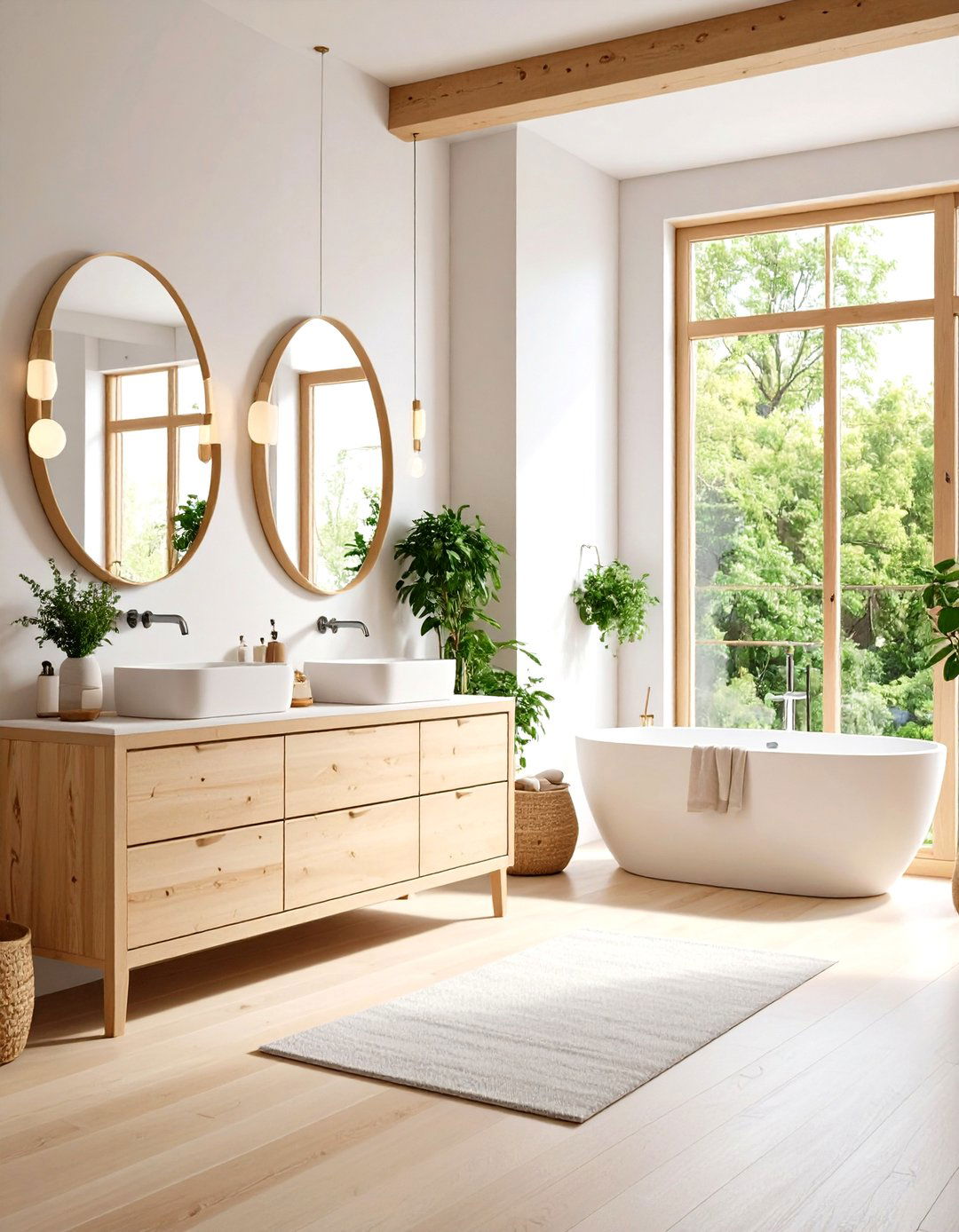
Emphasizing natural light and pale color palettes, Scandinavian minimalist bathrooms create bright, airy environments that combat darker climates. Light woods like birch, ash, and pine combined with white fixtures and soft gray accents establish the foundation of this design approach. Large windows, skylights, and mirrors maximize available natural light while white and pale surfaces reflect illumination throughout the space. Incorporate simple geometric shapes, clean-lined fixtures, and minimal decorative elements to maintain the characteristic Scandinavian simplicity. The result is a bathroom that feels spacious, clean, and effortlessly elegant.
6. Monochromatic Black Minimalist Bathroom
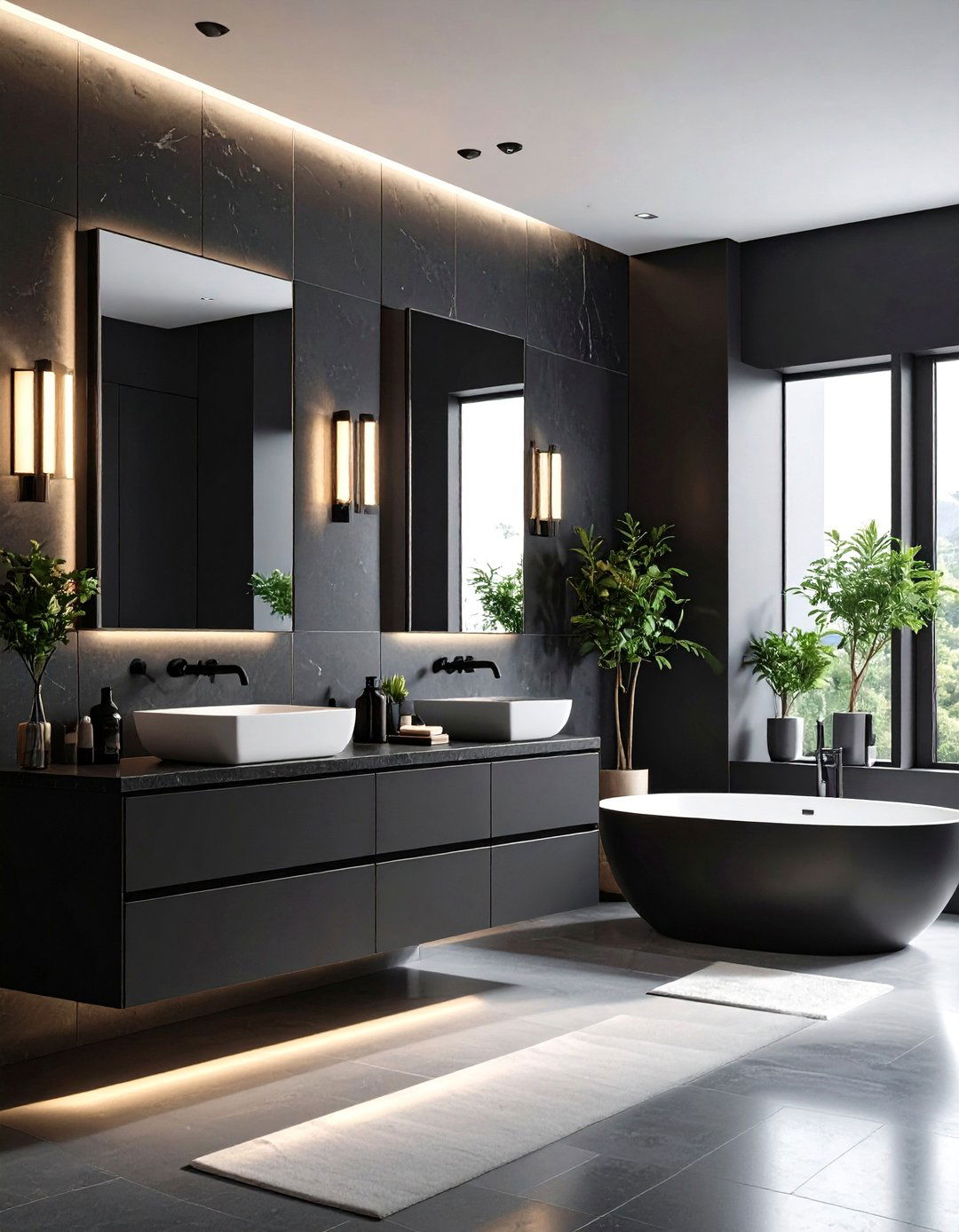
Bold black fixtures and surfaces create dramatic minimalist bathrooms that make sophisticated design statements. Matte black faucets, showerheads, and hardware provide striking contrast against white walls and neutral surfaces. The monochromatic approach eliminates visual clutter while creating depth through varying black tones and textures. Incorporate elements like black stone countertops, dark wood vanities, and black-framed mirrors to build layered sophistication. Balance the darkness with strategic lighting, white fixtures, and occasional warm wood accents to prevent the space from feeling too austere or enclosed.
7. Glass and Transparency Minimalist Bathroom
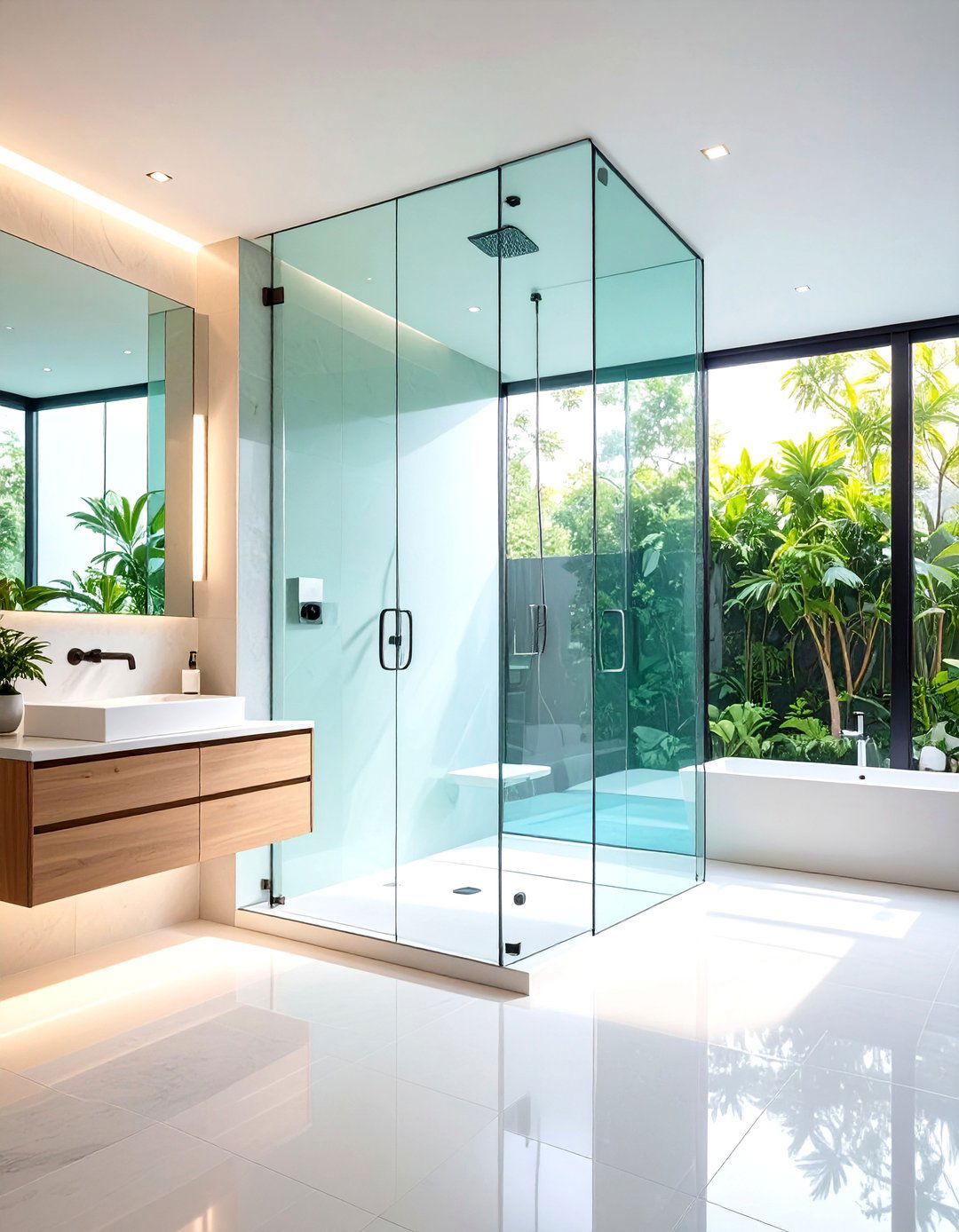
Transparent and translucent materials create minimalist bathrooms that maximize light flow and spatial perception. Frameless glass shower enclosures, glass countertops, and transparent storage solutions maintain openness while providing necessary functionality. The use of glass eliminates visual barriers between bathroom zones, making spaces feel larger and more connected. Complement glass elements with minimal hardware, clean-lined fixtures, and neutral color palettes to maintain the ethereal quality. This approach works exceptionally well in smaller bathrooms where maintaining sight lines helps combat cramped feelings.
8. Warm Wood Minimalist Bathroom Retreat
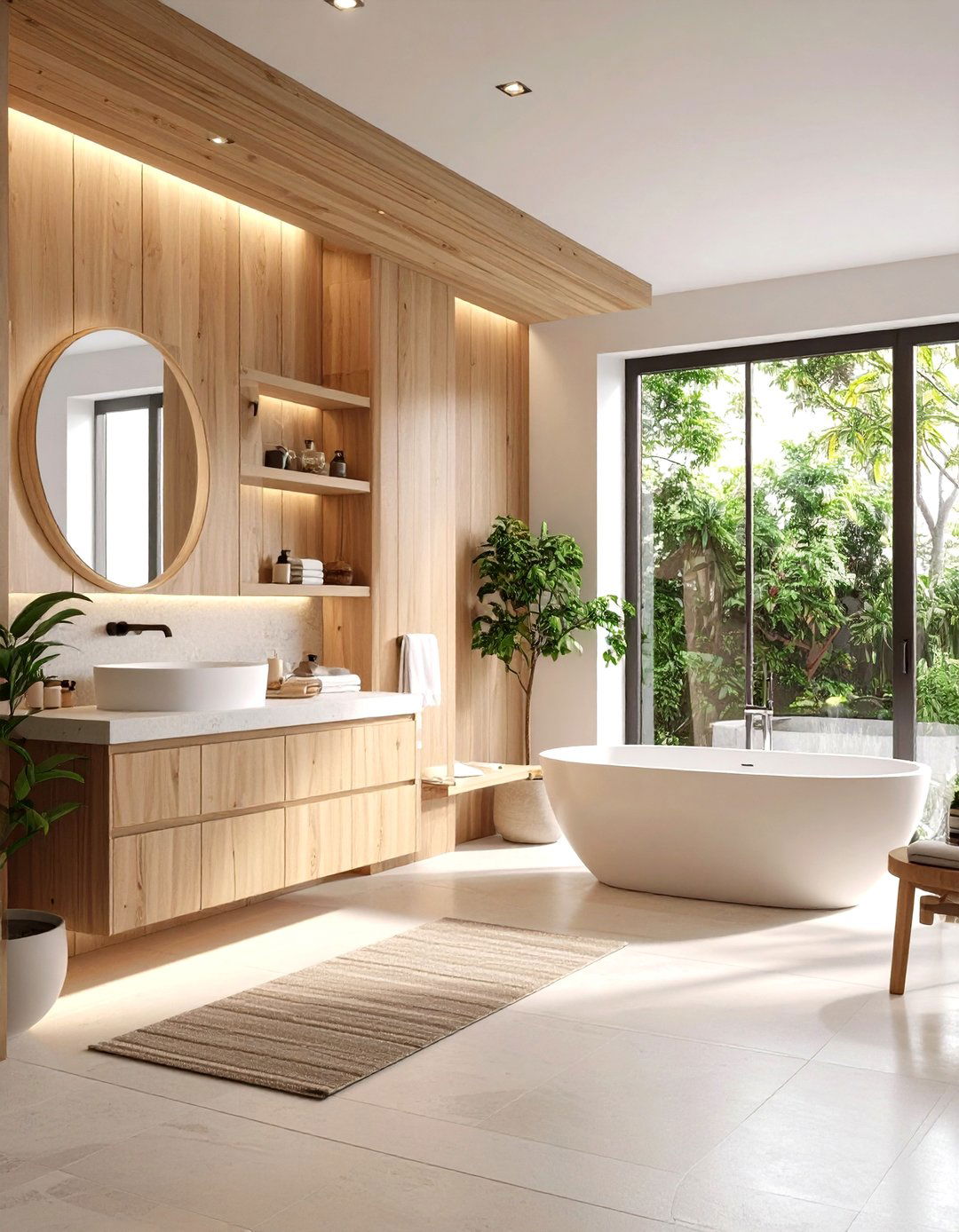
Natural wood elements bring warmth and organic texture to minimalist bathrooms without compromising clean design principles. Wood vanities, shelving, and accent walls in species like oak, walnut, or teak create inviting focal points within neutral color schemes. The natural grain patterns provide subtle visual interest while maintaining the simplicity essential to minimalist aesthetics. Pair wood elements with white fixtures, stone countertops, and minimal hardware to create balanced compositions. Proper sealing and ventilation ensure wood elements remain beautiful and functional in humid bathroom environments.
9. White Minimalist Bathroom Serenity
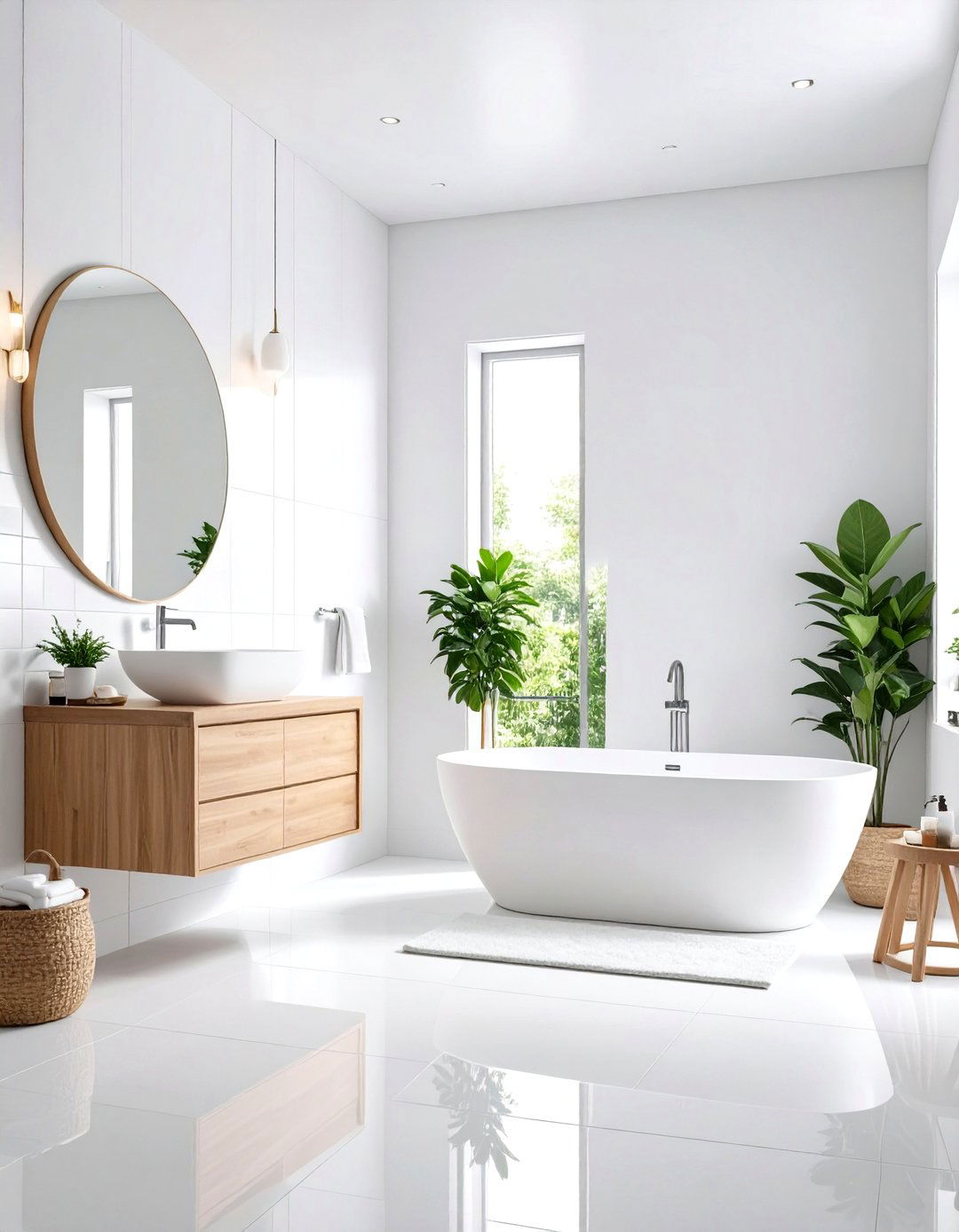
Pure white color schemes create minimalist bathrooms that embody cleanliness, simplicity, and timeless elegance. Various white tones from warm ivory to cool snow white provide subtle variation while maintaining monochromatic harmony. White subway tiles, porcelain fixtures, and painted surfaces reflect light beautifully, making spaces feel larger and brighter. Incorporate different textures through materials like matte paint, glossy tiles, and natural stone to add depth without introducing color distractions. Strategic placement of chrome or brushed nickel fixtures provides necessary contrast while maintaining the serene white palette.
10. Open Shower Minimalist Bathroom Design
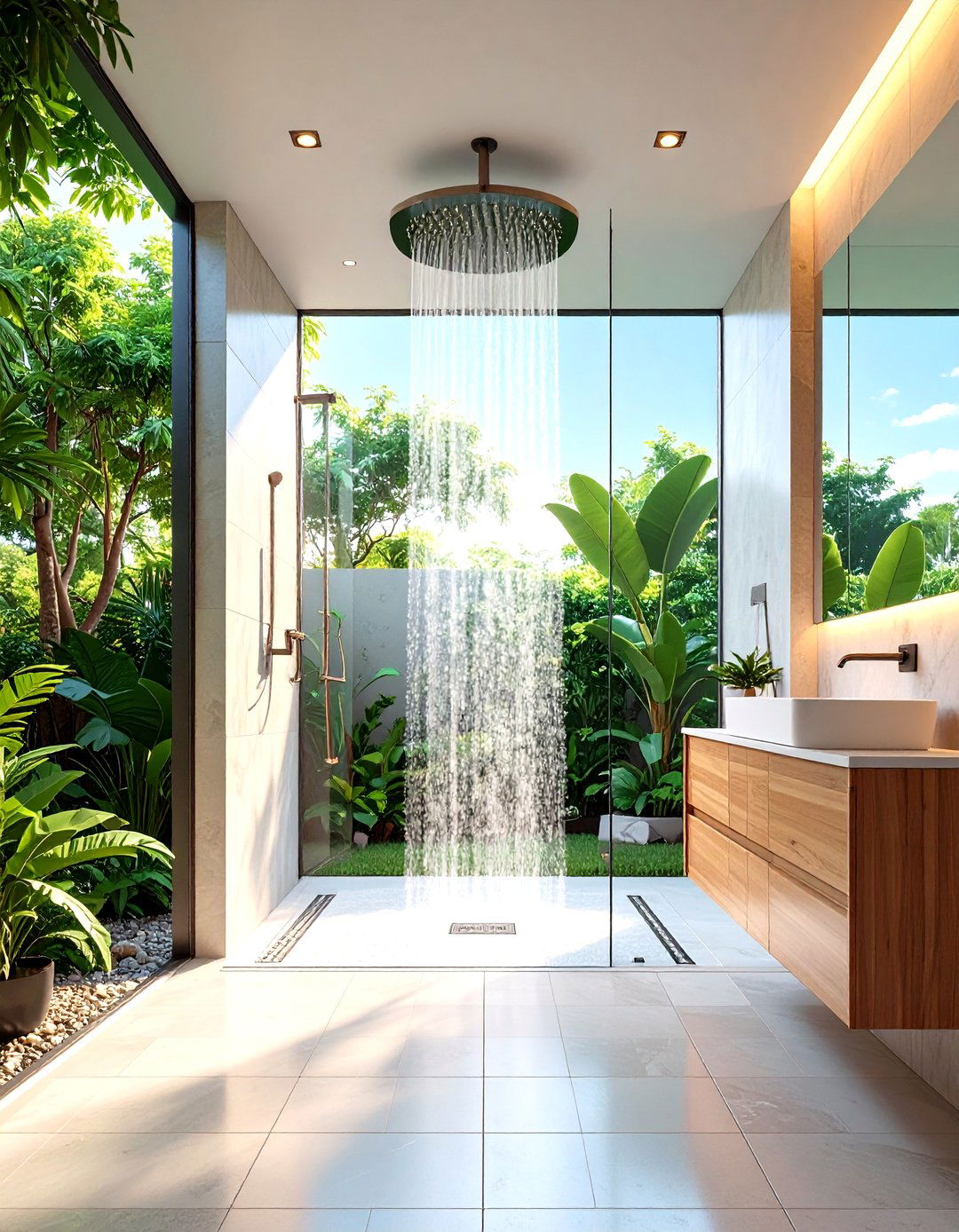
Barrier-free shower designs create seamless minimalist bathrooms that prioritize accessibility and visual flow. Open showers with linear drains, minimal glass panels, and continuous flooring eliminate traditional shower boundaries while maintaining water containment. The uninterrupted floor planes and reduced visual barriers make bathrooms feel significantly larger and more cohesive. Incorporate rainfall showerheads, minimalist controls, and strategic lighting to create spa-like experiences within the open design. This approach requires careful consideration of water management and ventilation to ensure functionality matches the striking aesthetic.
11. Geometric Minimalist Bathroom Precision
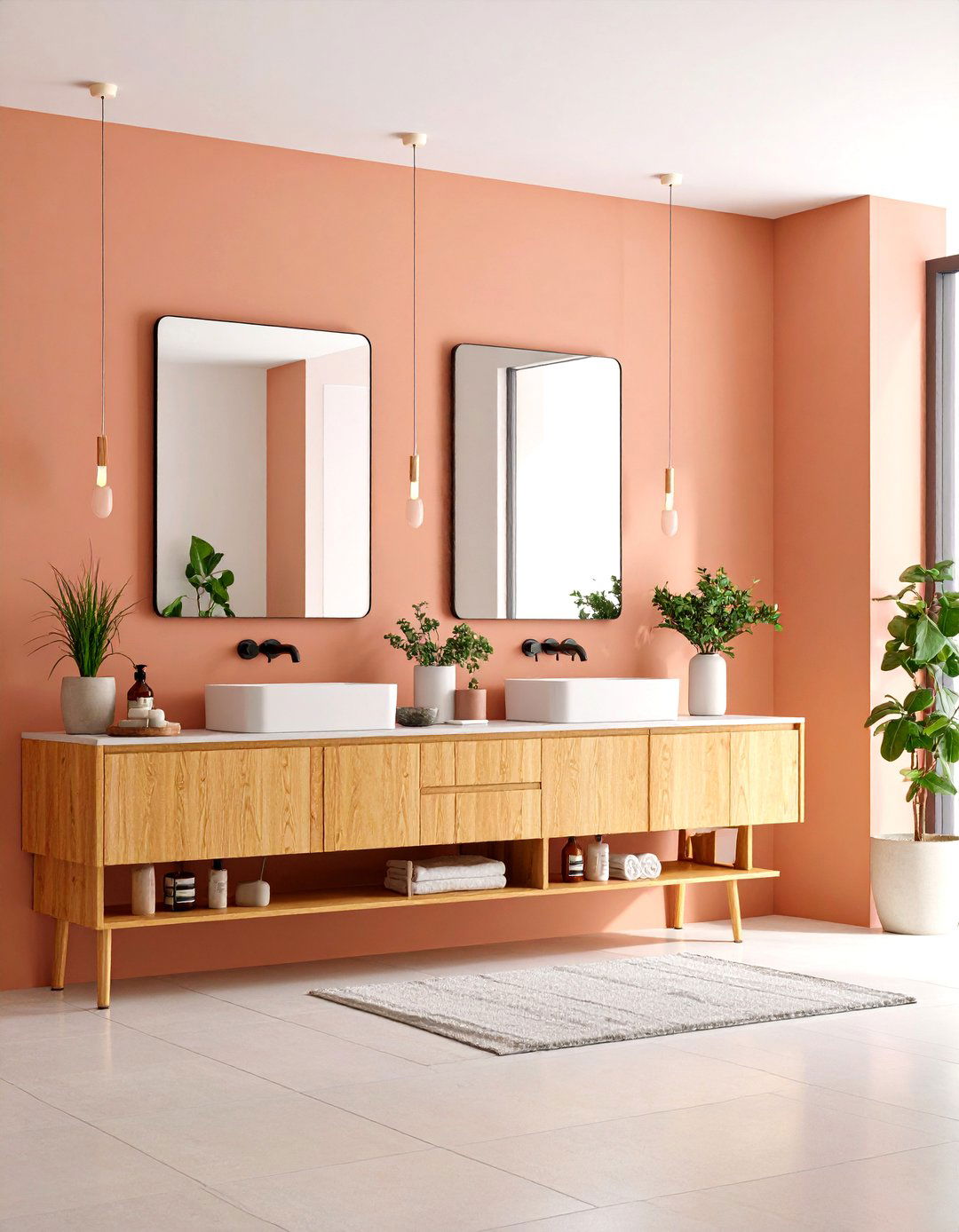
Clean geometric shapes and precise lines define minimalist bathrooms that celebrate mathematical beauty and spatial harmony. Rectangular vanities, square mirrors, and linear fixtures create structured compositions that emphasize order and clarity. The geometric approach extends to tile patterns, layout arrangements, and architectural details that reinforce the minimalist philosophy. Maintain consistency in proportions and scale relationships to achieve visual balance throughout the space. Complement geometric elements with neutral colors and minimal decorative objects to let the mathematical beauty of the design take center stage.
12. Spa-Inspired Minimalist Bathroom Wellness
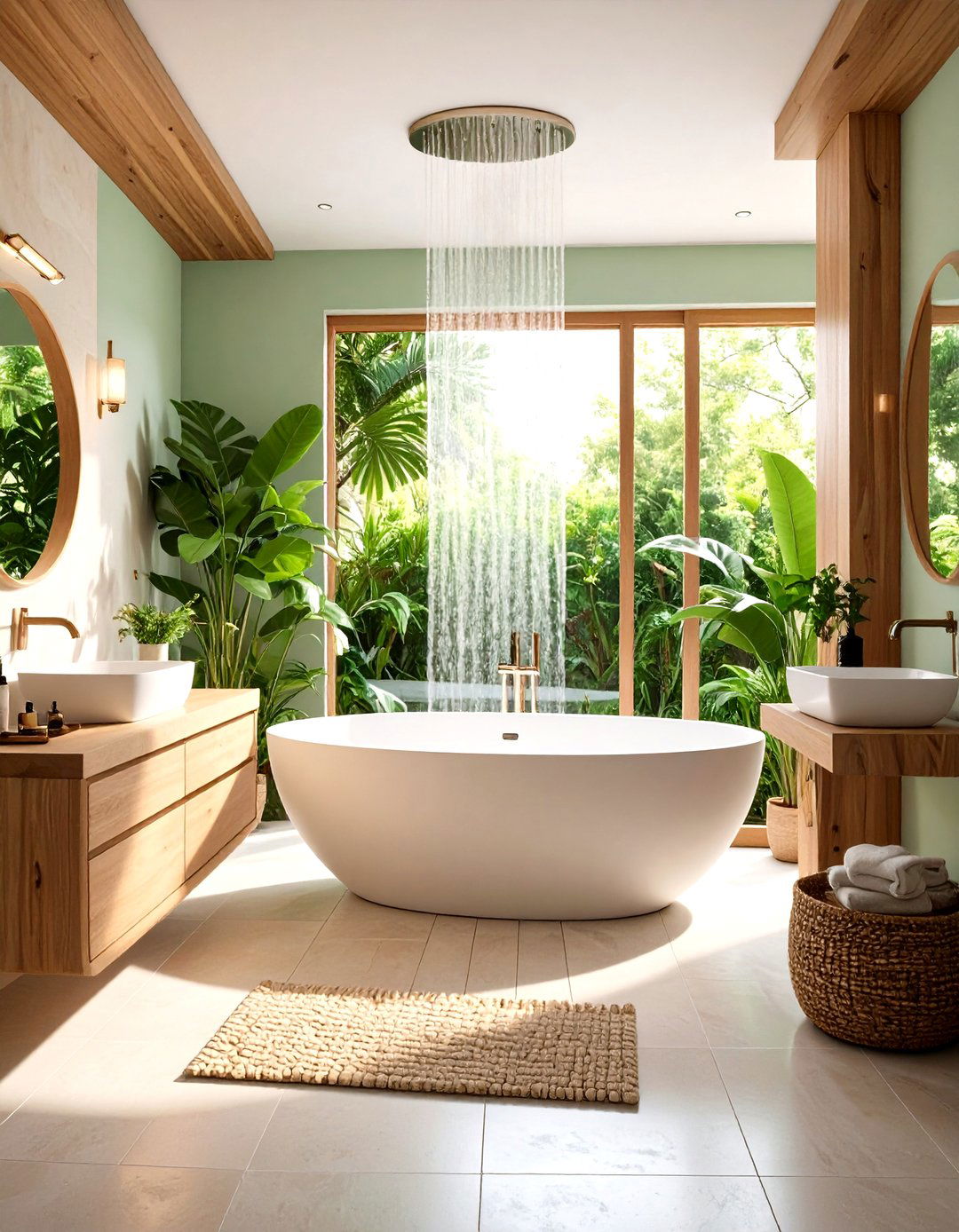
Minimalist design principles applied to spa-like bathrooms create wellness-focused environments that prioritize relaxation and rejuvenation. Deep soaking tubs, rainfall showers, and heated floors provide luxury amenities within clean, uncluttered settings. Natural materials like stone and wood combined with neutral color palettes establish calming foundations for daily self-care rituals. Incorporate elements like built-in benches, minimalist storage solutions, and strategic lighting to enhance the spa experience. The key lies in balancing indulgent features with restrained design to create spaces that feel both luxurious and serene.
13. Biophilic Minimalist Bathroom Nature

Incorporating natural elements into minimalist bathrooms creates biophilic designs that promote well-being through nature connections. Carefully selected plants, natural light sources, and organic materials establish links to the outdoors while maintaining clean design principles. Stone planters, wooden shelving, and living walls provide opportunities for greenery without creating clutter. The biophilic approach extends to color palettes inspired by nature, including soft greens, earthy browns, and sky blues. Balance natural elements with minimalist fixtures and clean lines to create harmonious environments that nurture both body and mind.
14. Textural Minimalist Bathroom Depth

Varied textures within neutral color palettes create minimalist bathrooms with visual depth and tactile interest. Rough stone walls, smooth concrete floors, and soft textile accents provide sensory variety while maintaining design cohesion. The textural approach allows for complexity within simplicity, creating spaces that engage multiple senses without overwhelming the visual field. Incorporate elements like fluted wood panels, ribbed tiles, and natural stone surfaces to build layered compositions. The key is maintaining restraint in color choices while allowing textures to create visual and tactile richness.
15. Smart Storage Minimalist Bathroom Organization
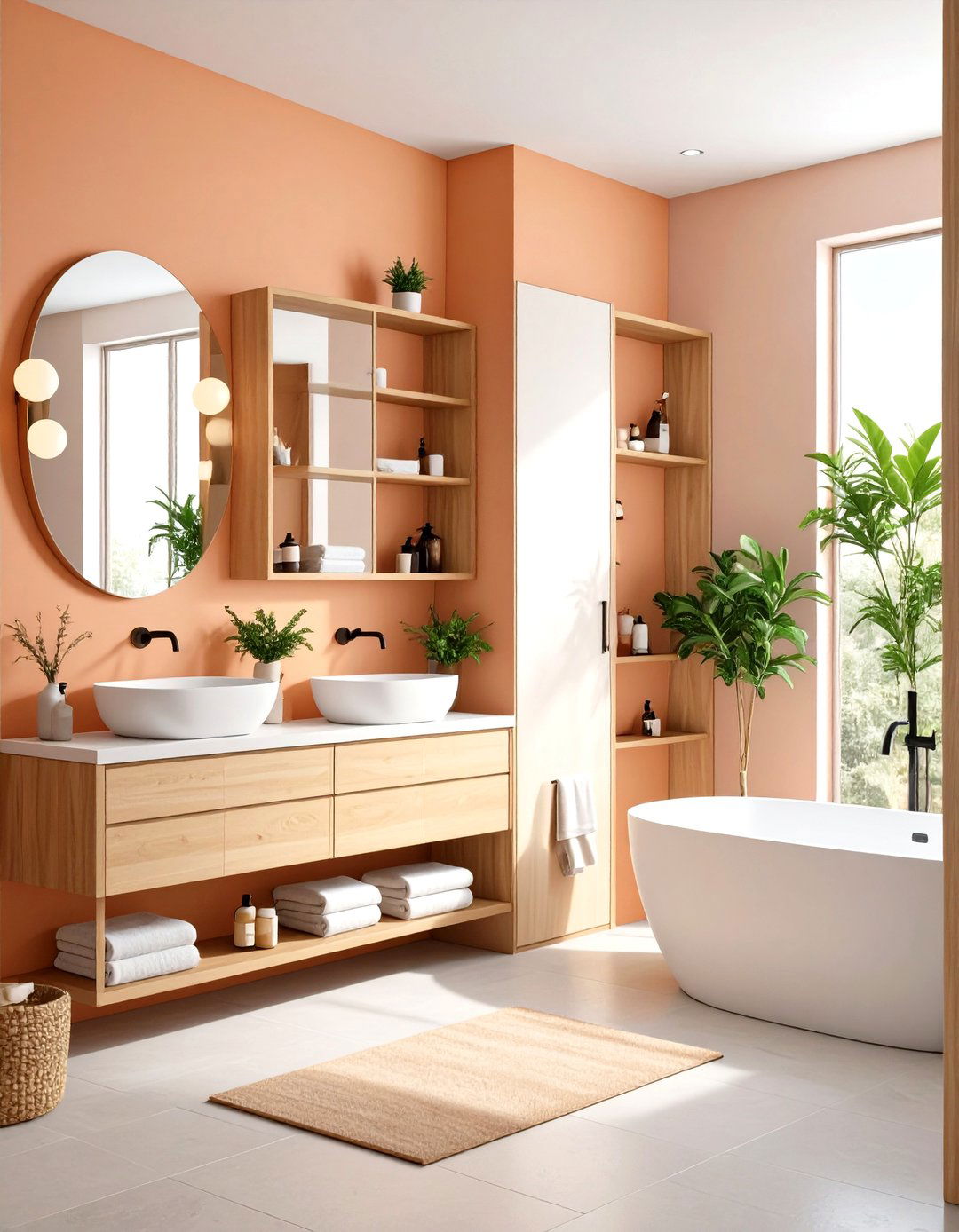
Integrated storage solutions create minimalist bathrooms that maintain clean appearances while providing practical organization. Hidden cabinets, recessed shelving, and built-in niches eliminate visual clutter while keeping essential items accessible. The minimalist approach to storage emphasizes quality over quantity, featuring well-designed solutions that blend seamlessly with architectural elements. Incorporate elements like medicine cabinets with clean lines, floating shelves, and drawer organizers to maximize functionality. The goal is creating spaces that appear effortlessly organized while providing everything needed for daily routines.
16. Minimalist Bathroom Lighting Ambiance
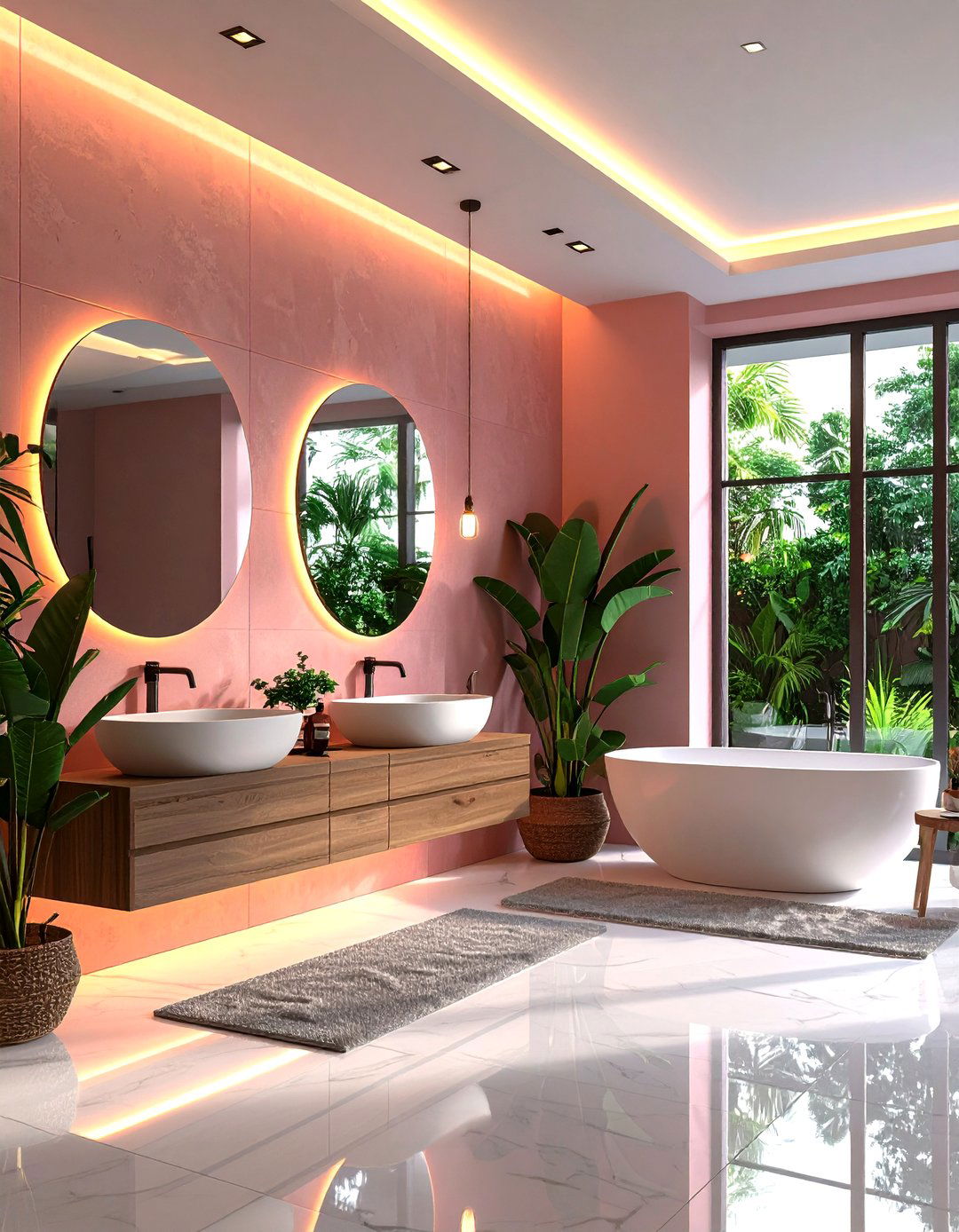
Strategic lighting design creates minimalist bathrooms that balance functionality with atmospheric beauty. Recessed fixtures, linear LED strips, and minimalist pendant lights provide necessary illumination while maintaining clean design lines. The lighting approach emphasizes layering different types of illumination, including task lighting for grooming activities and ambient lighting for relaxation. Incorporate elements like backlit mirrors, cove lighting, and dimmable controls to create versatile lighting scenarios. Natural light integration through skylights and large windows complements artificial lighting to create bright, welcoming environments.
17. Sustainable Minimalist Bathroom Eco-Design
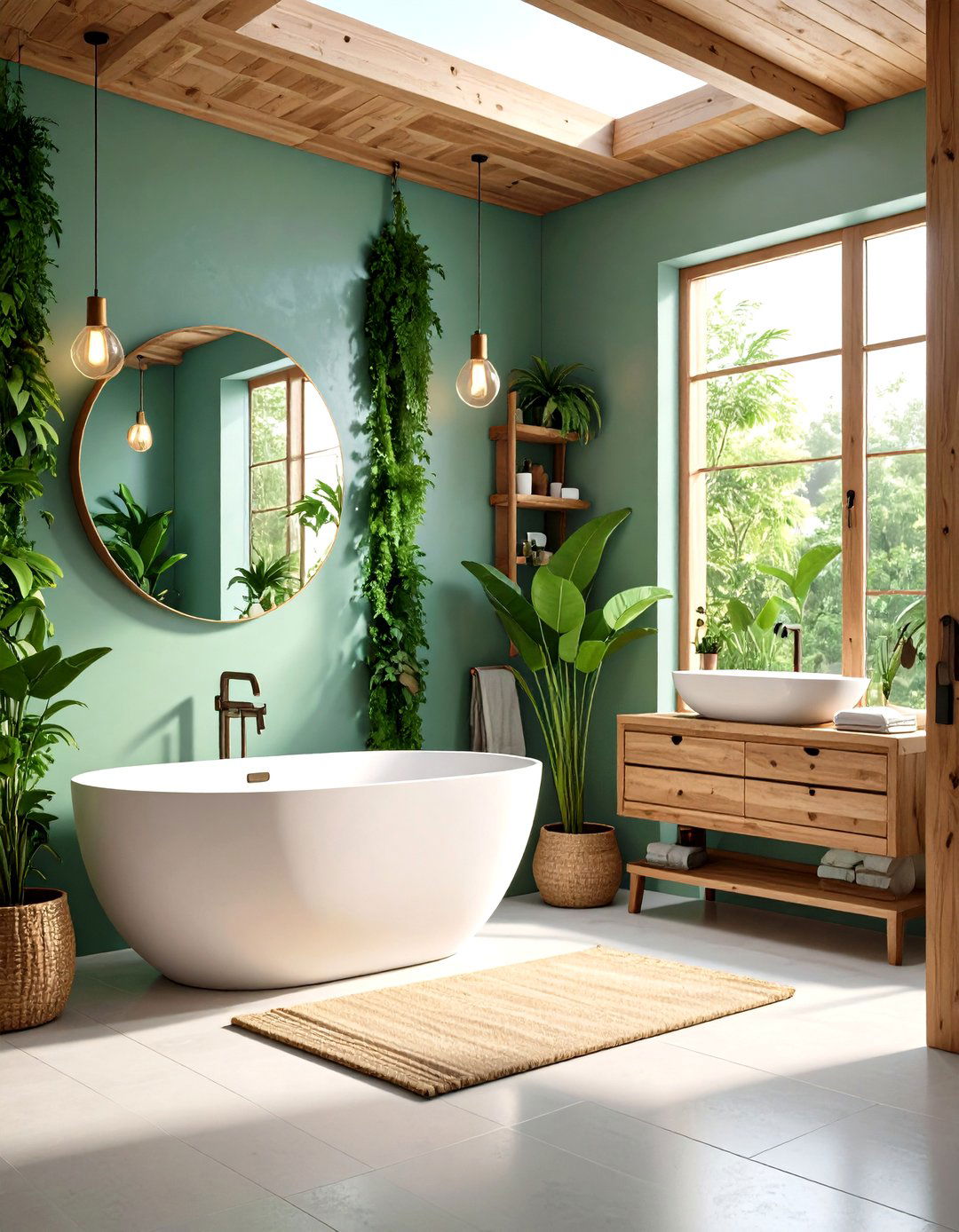
Environmentally conscious materials and fixtures create minimalist bathrooms that prioritize sustainability without compromising style. Reclaimed wood, recycled glass, and low-impact manufacturing processes align with minimalist principles while reducing environmental footprint. Water-saving fixtures, energy-efficient lighting, and sustainable materials create responsible designs that benefit both occupants and the planet. Incorporate elements like bamboo accessories, low-VOC finishes, and energy-efficient ventilation systems to enhance sustainability. The minimalist approach naturally supports sustainability by emphasizing quality over quantity and longevity over trends.
18. Zen Minimalist Bathroom Meditation
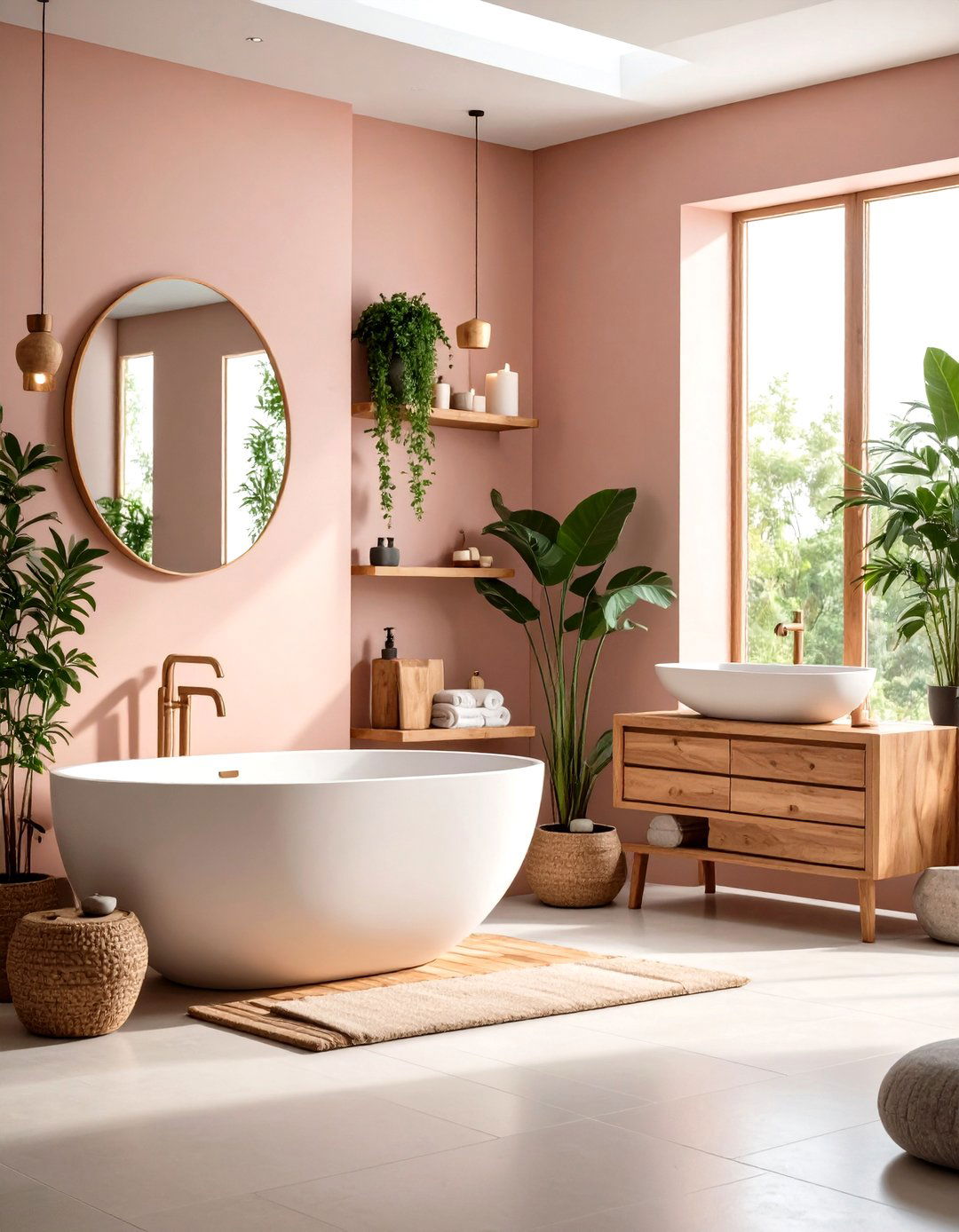
Eastern philosophy influences create minimalist bathrooms that serve as meditation spaces and personal retreats. The Zen approach emphasizes simplicity, natural materials, and spatial harmony to create environments that promote mindfulness and inner peace. Incorporate elements like stone vessels, wooden platforms, and minimal decorative objects to establish authentic Zen aesthetics. The color palette typically features earth tones, soft grays, and natural wood finishes that support contemplative activities. Strategic placement of plants, natural light, and water features enhances the meditative quality of these serene spaces.
19. Minimalist Bathroom Hardware Sophistication
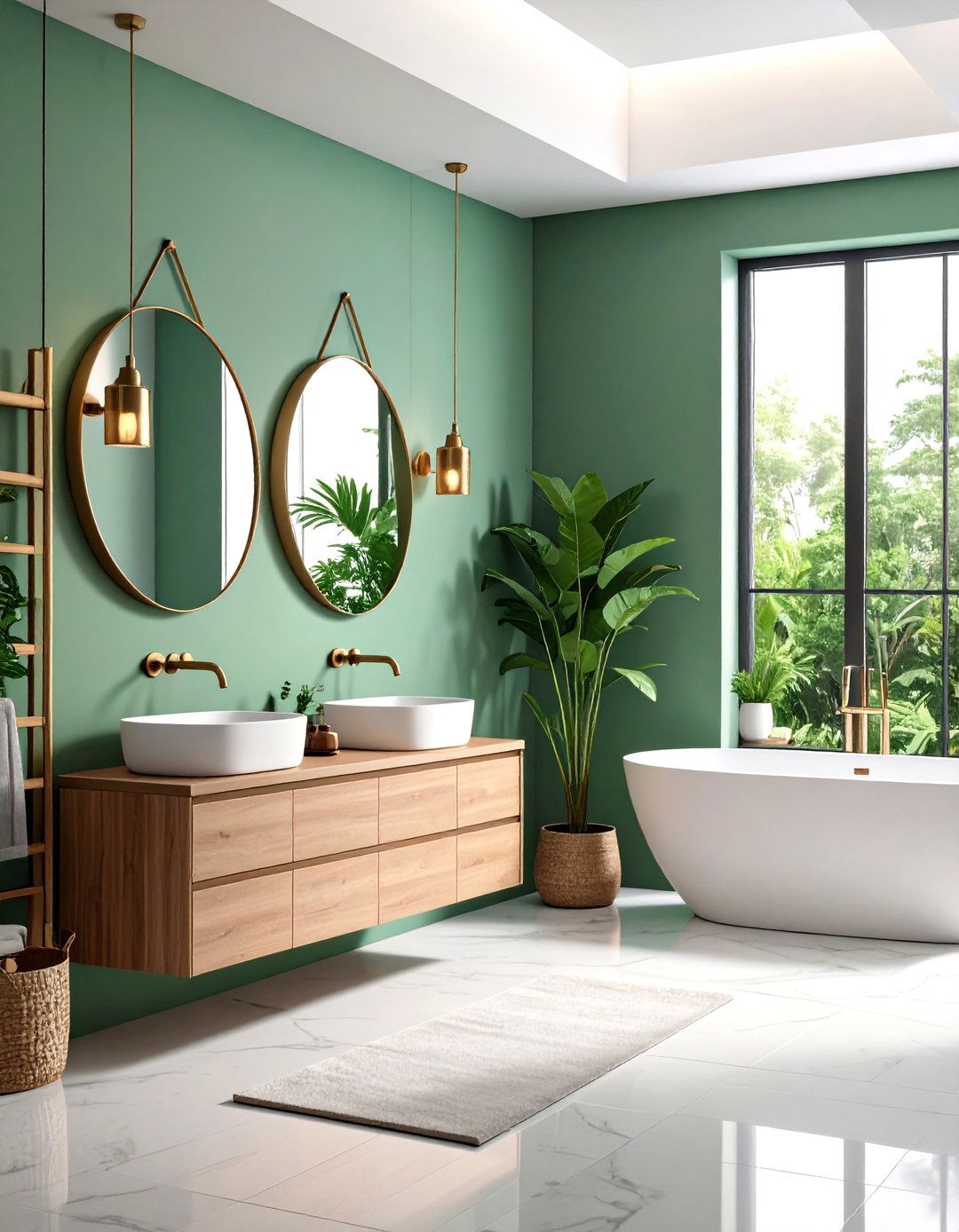
Carefully selected hardware and fixtures create minimalist bathrooms that exemplify refined taste and attention to detail. Streamlined faucets, simple towel bars, and minimal cabinet pulls maintain clean lines while providing necessary functionality. The hardware approach emphasizes quality materials like brushed steel, matte black, and brass finishes that complement overall design schemes. Incorporate elements like wall-mounted fixtures, hidden hinges, and integrated controls to reduce visual clutter. The goal is selecting pieces that disappear into the design while performing their functions flawlessly.
20. Wet Room Minimalist Bathroom Openness
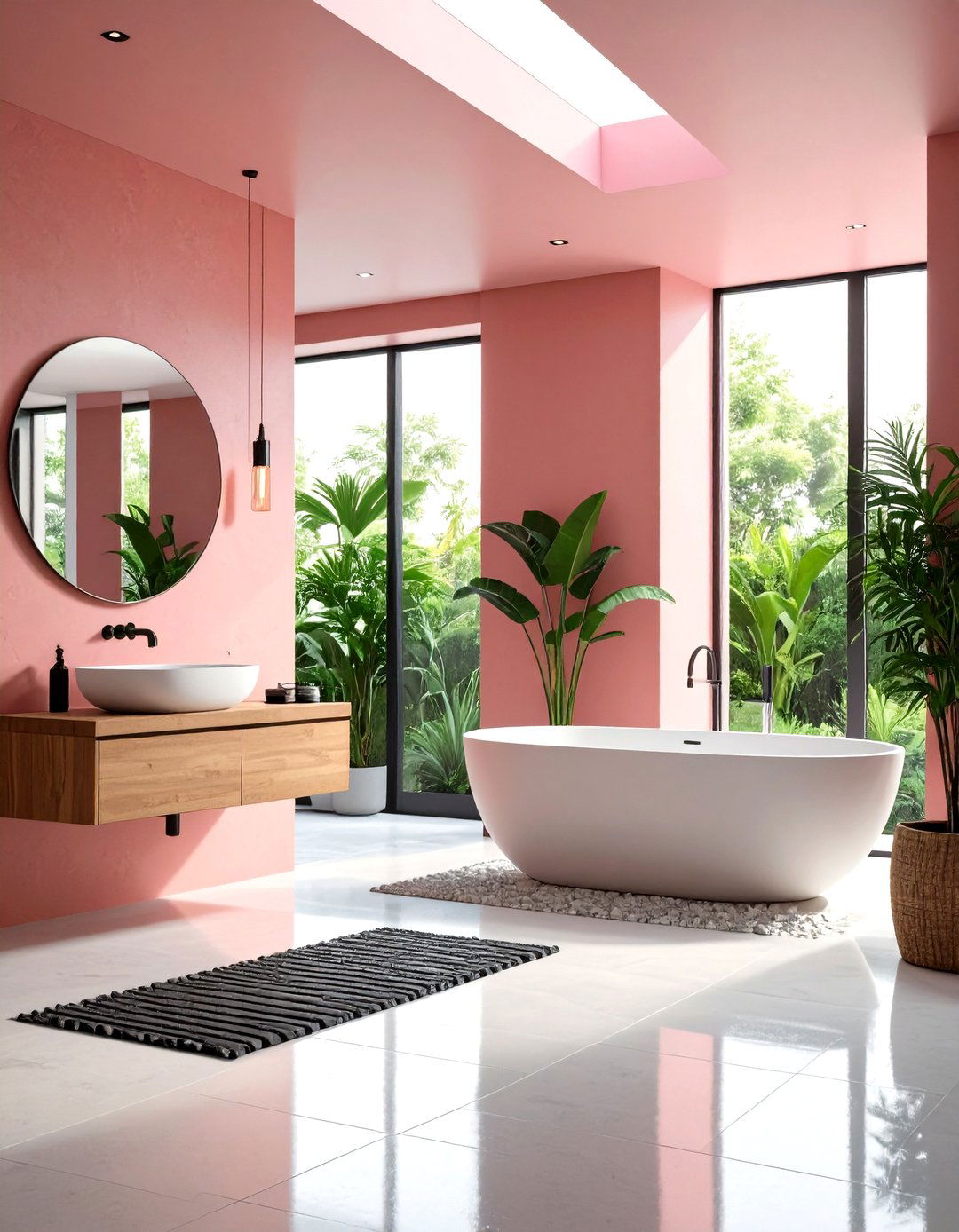
Fully waterproofed wet rooms create minimalist bathrooms that eliminate traditional shower barriers while maintaining functional water management. The open design approach creates seamless transitions between bathing and other bathroom activities, making spaces feel larger and more integrated. Incorporate elements like linear drains, continuous flooring, and minimal glass panels to define spaces without creating visual barriers. The wet room concept requires careful consideration of ventilation, waterproofing, and drainage to ensure long-term functionality. This approach creates sophisticated bathrooms that feel both luxurious and practical.
Conclusion:
Minimalist bathroom design continues evolving while maintaining core principles of simplicity, functionality, and aesthetic restraint. These twenty approaches demonstrate how minimalist concepts can be adapted to various preferences, budgets, and spatial constraints. The key to successful minimalist bathroom design lies in thoughtful material selection, strategic storage solutions, and careful attention to proportion and scale. By embracing these principles, homeowners can create bathrooms that serve as daily retreats, promoting well-being through thoughtful design that celebrates the beauty of simplicity.


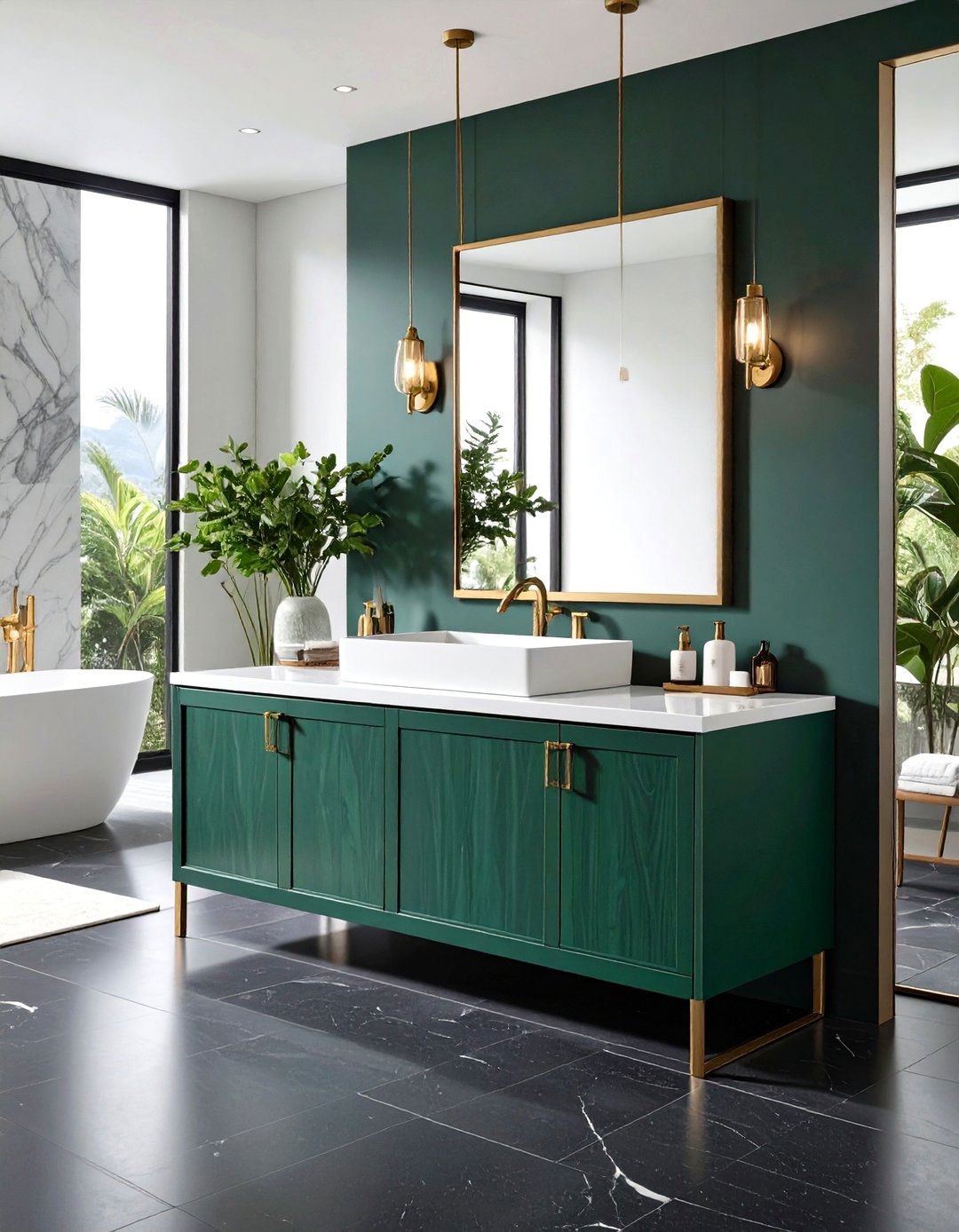
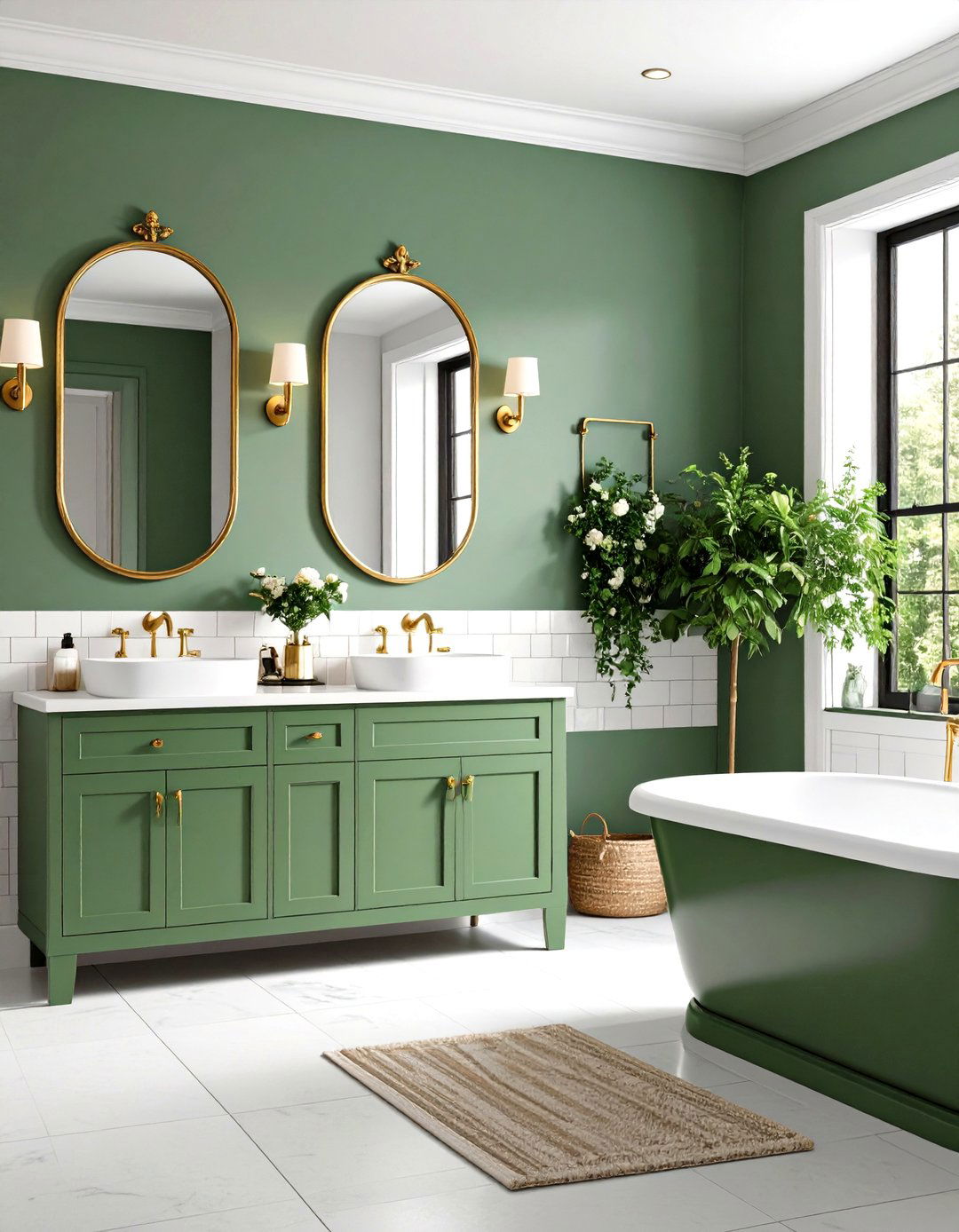
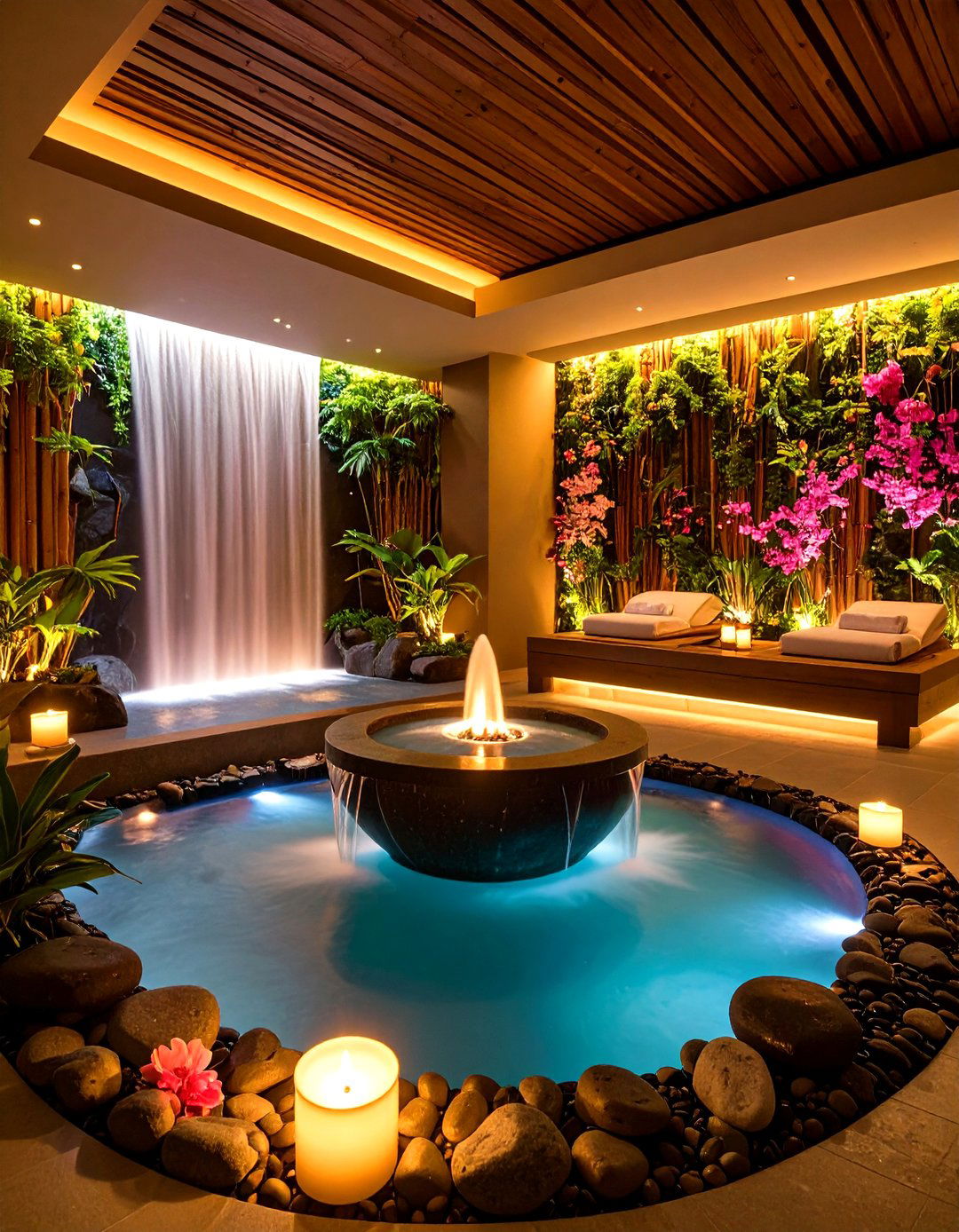
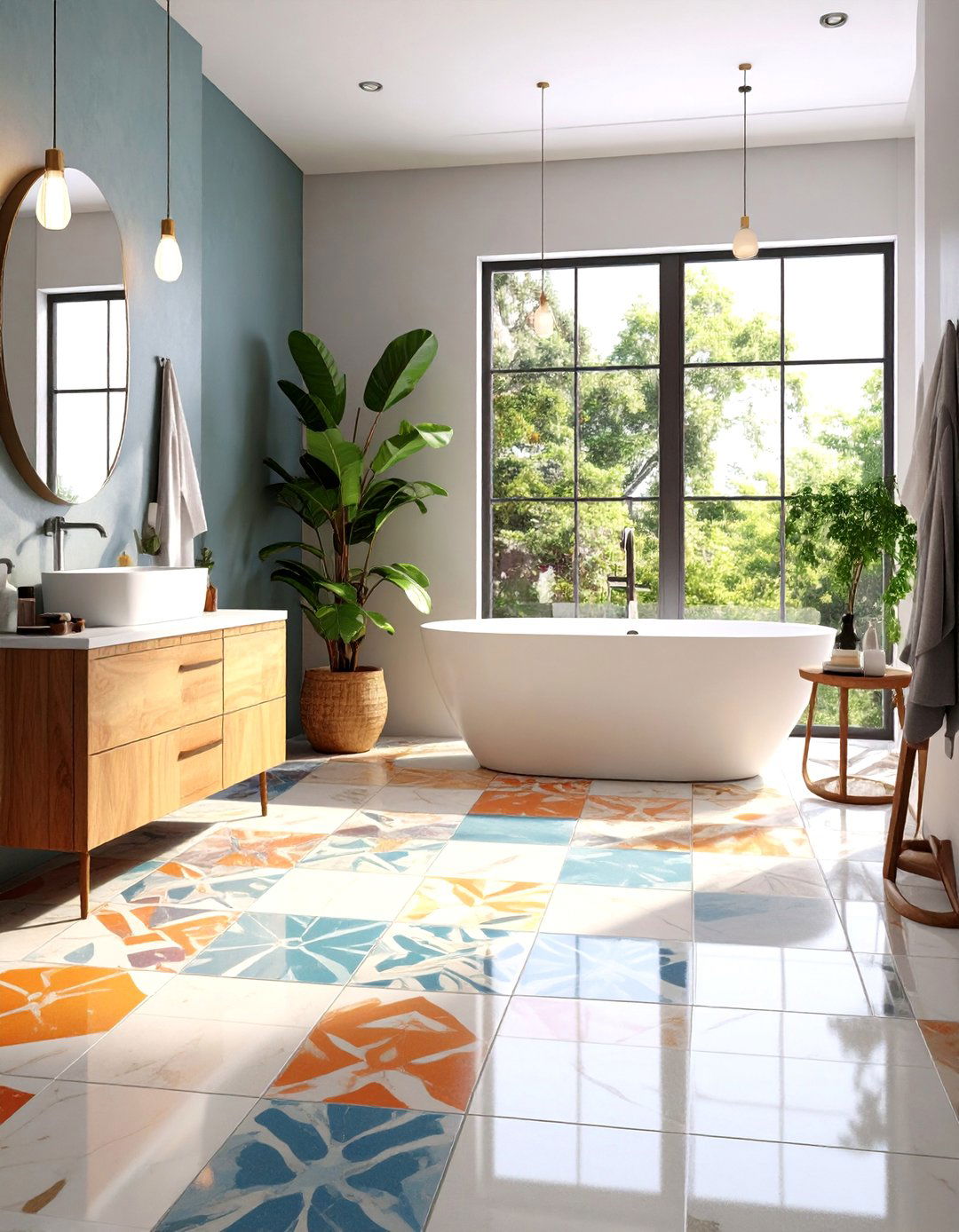
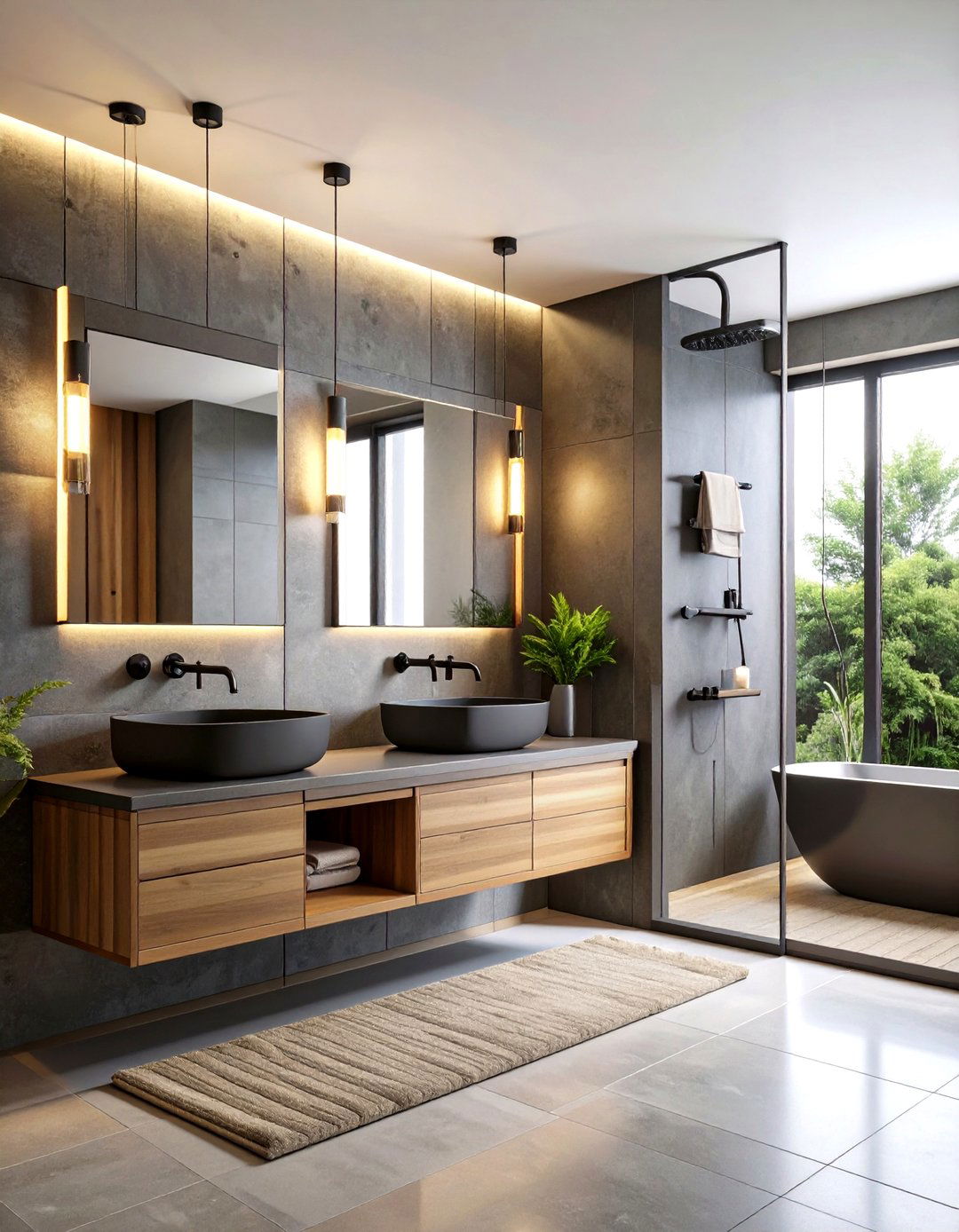
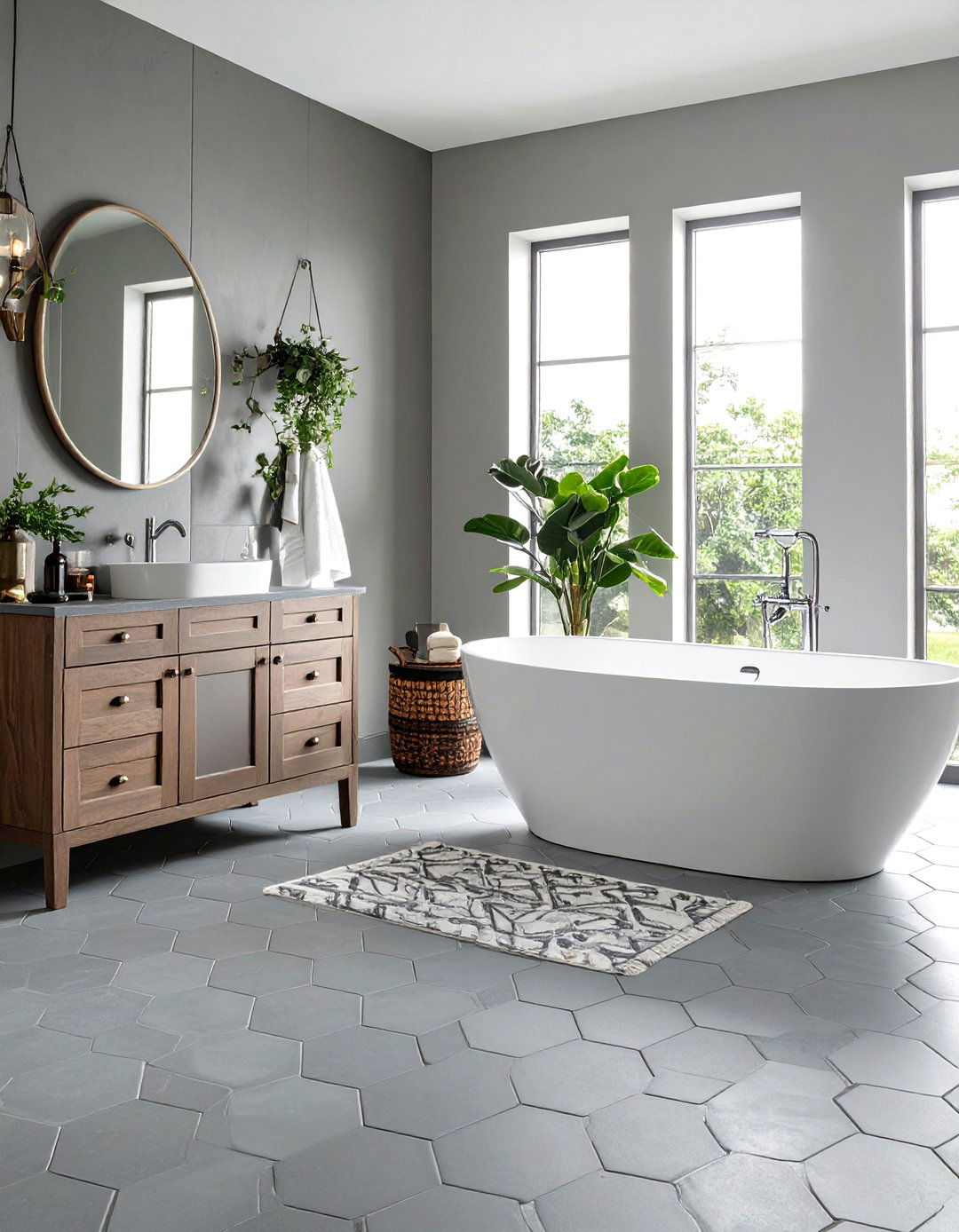
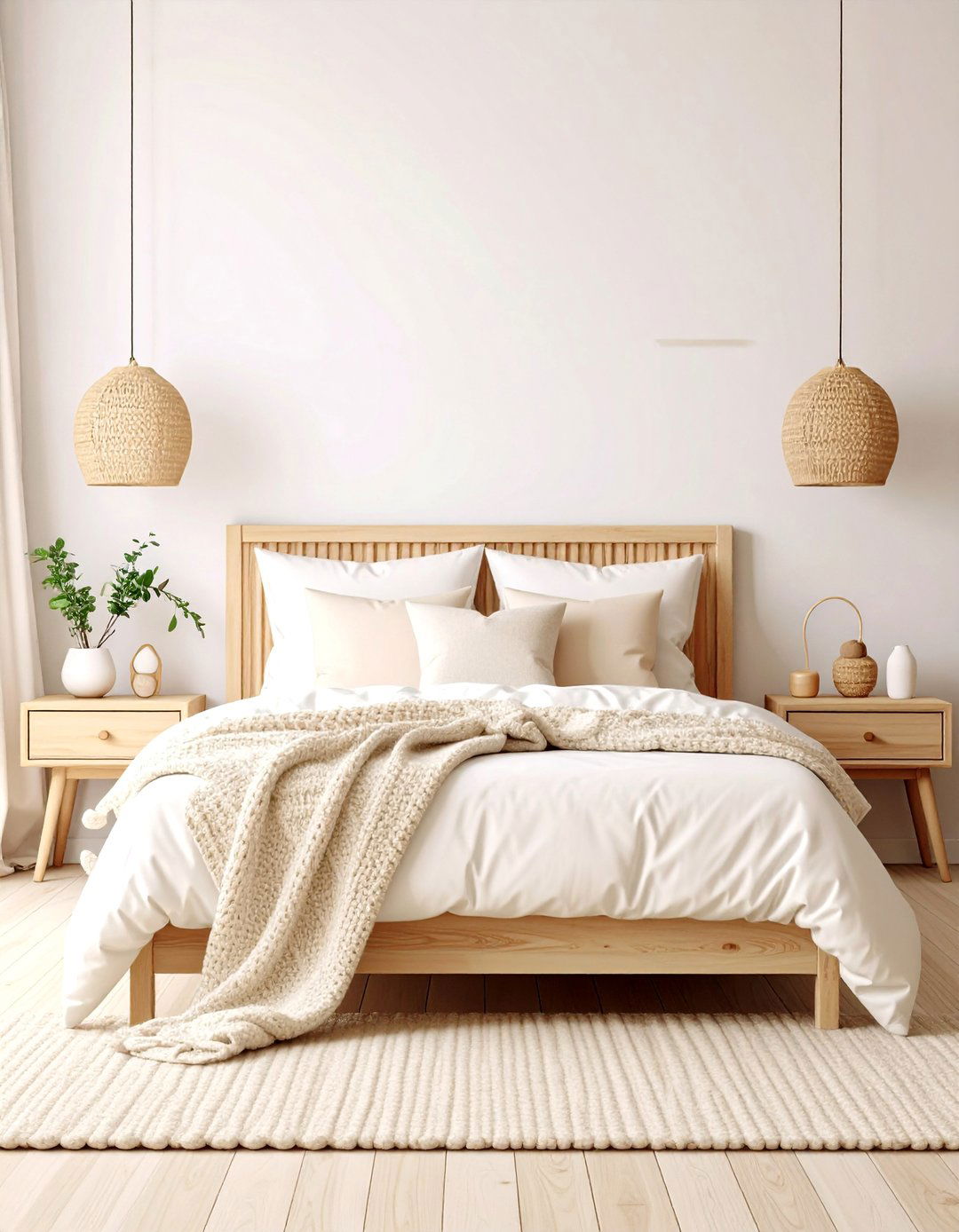


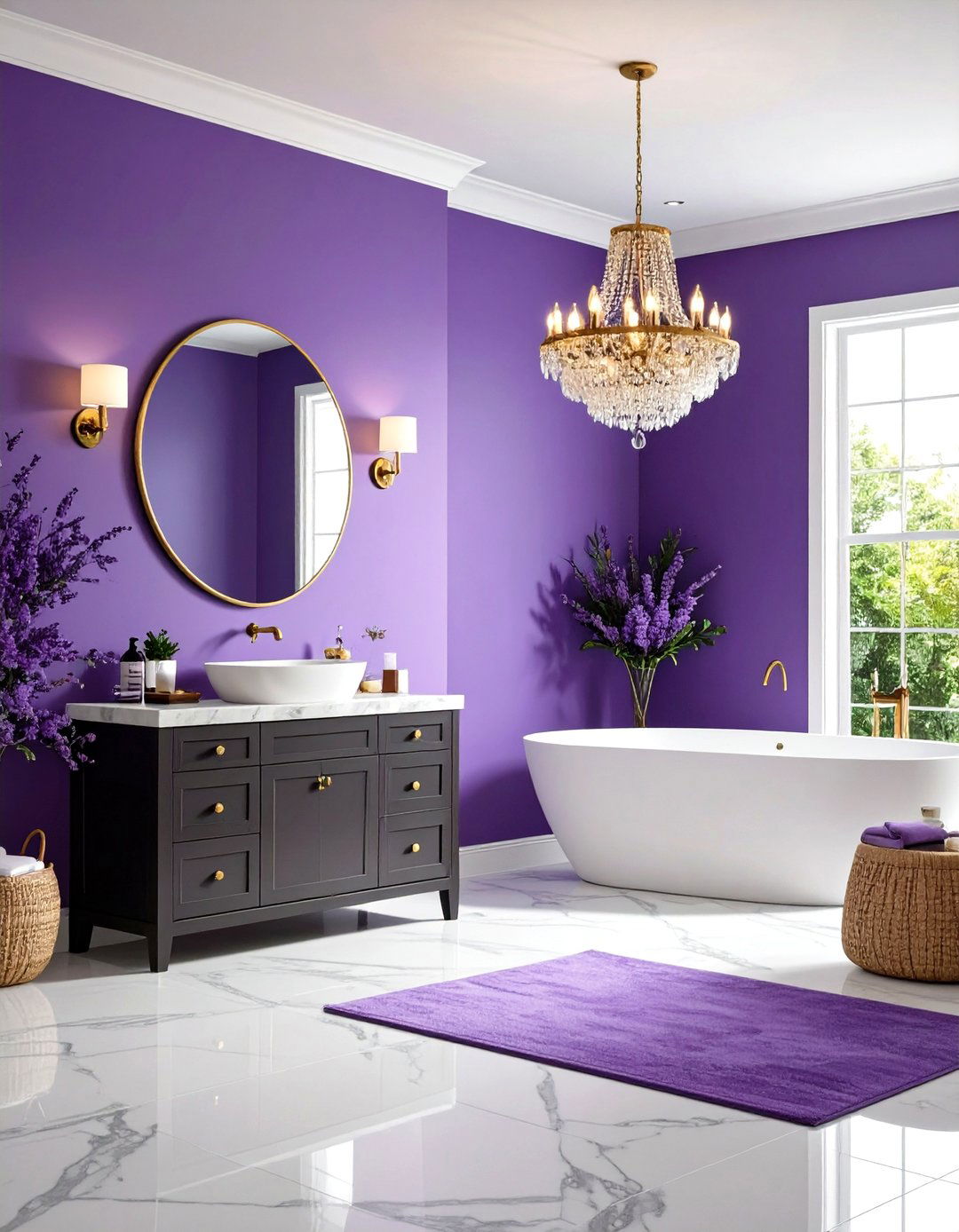
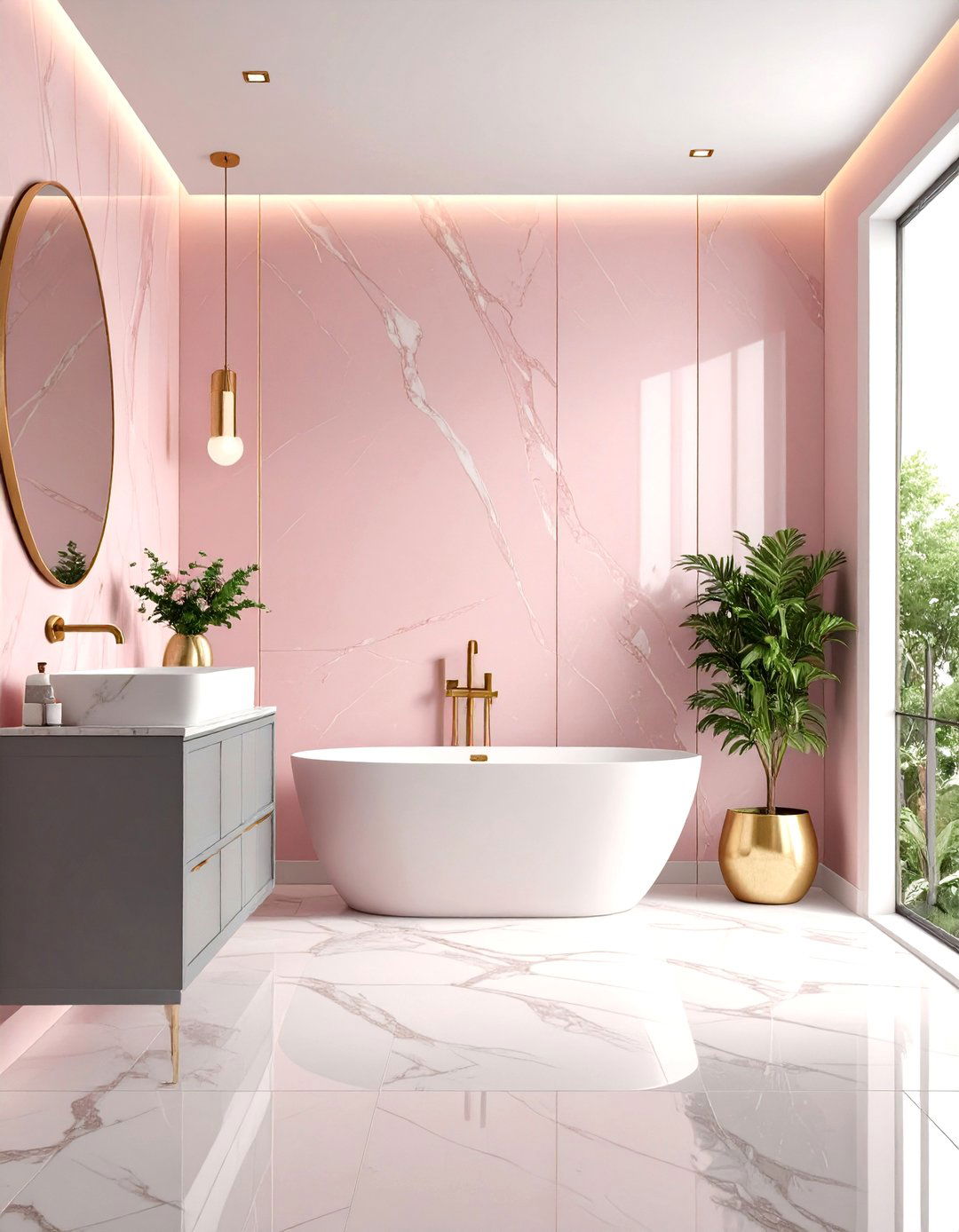
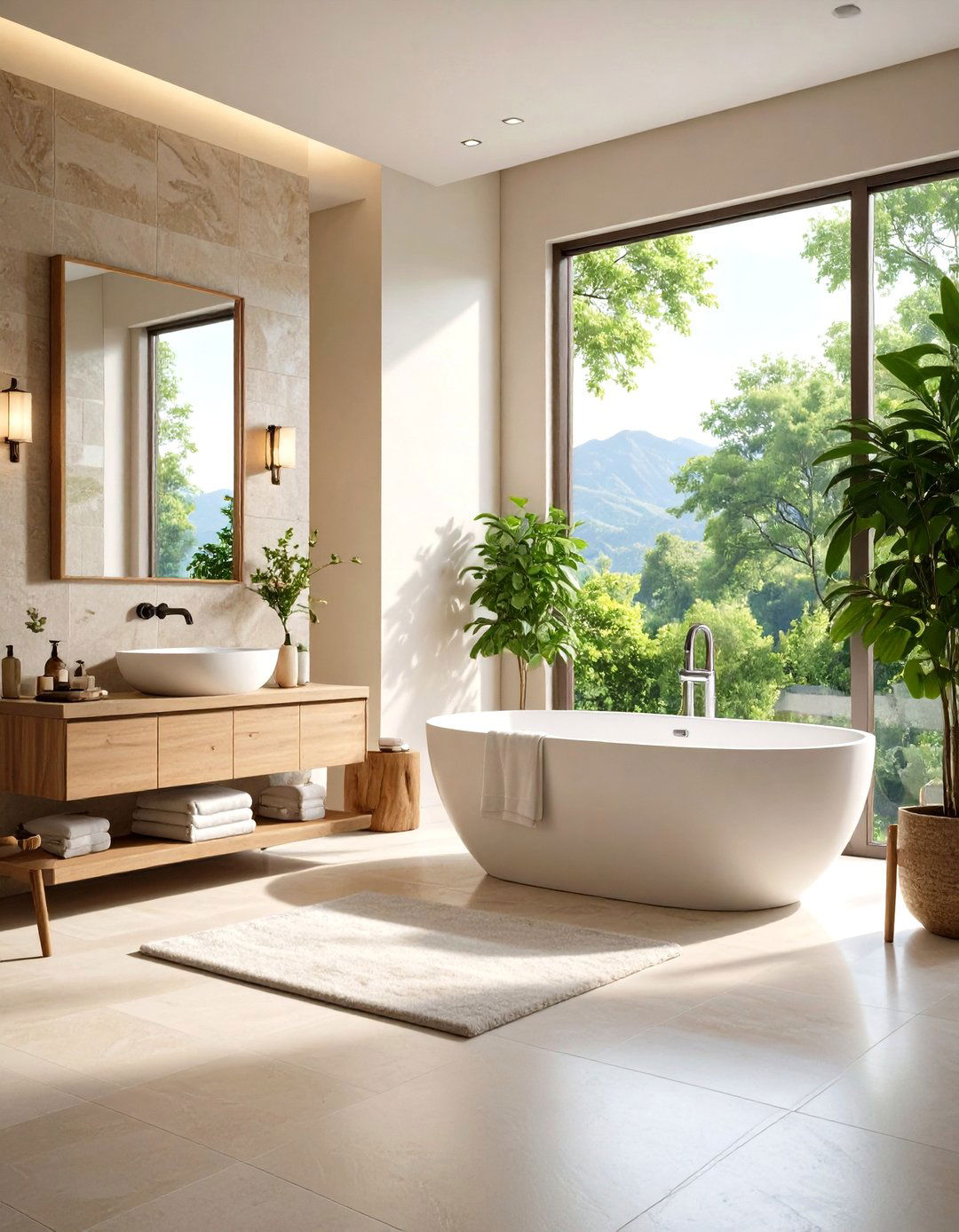
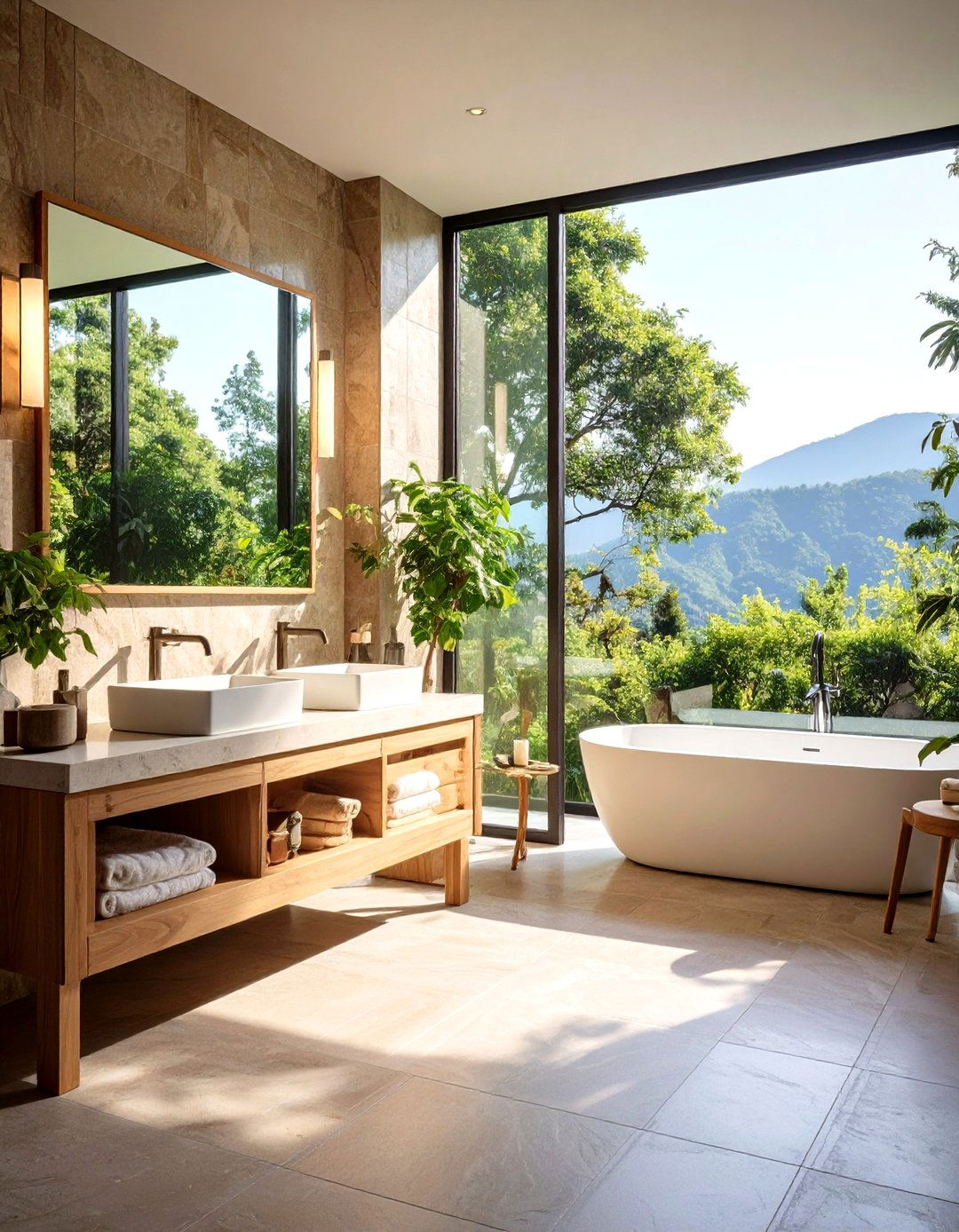
Leave a Reply